Advice and Answers from the Creath Marketplace Team
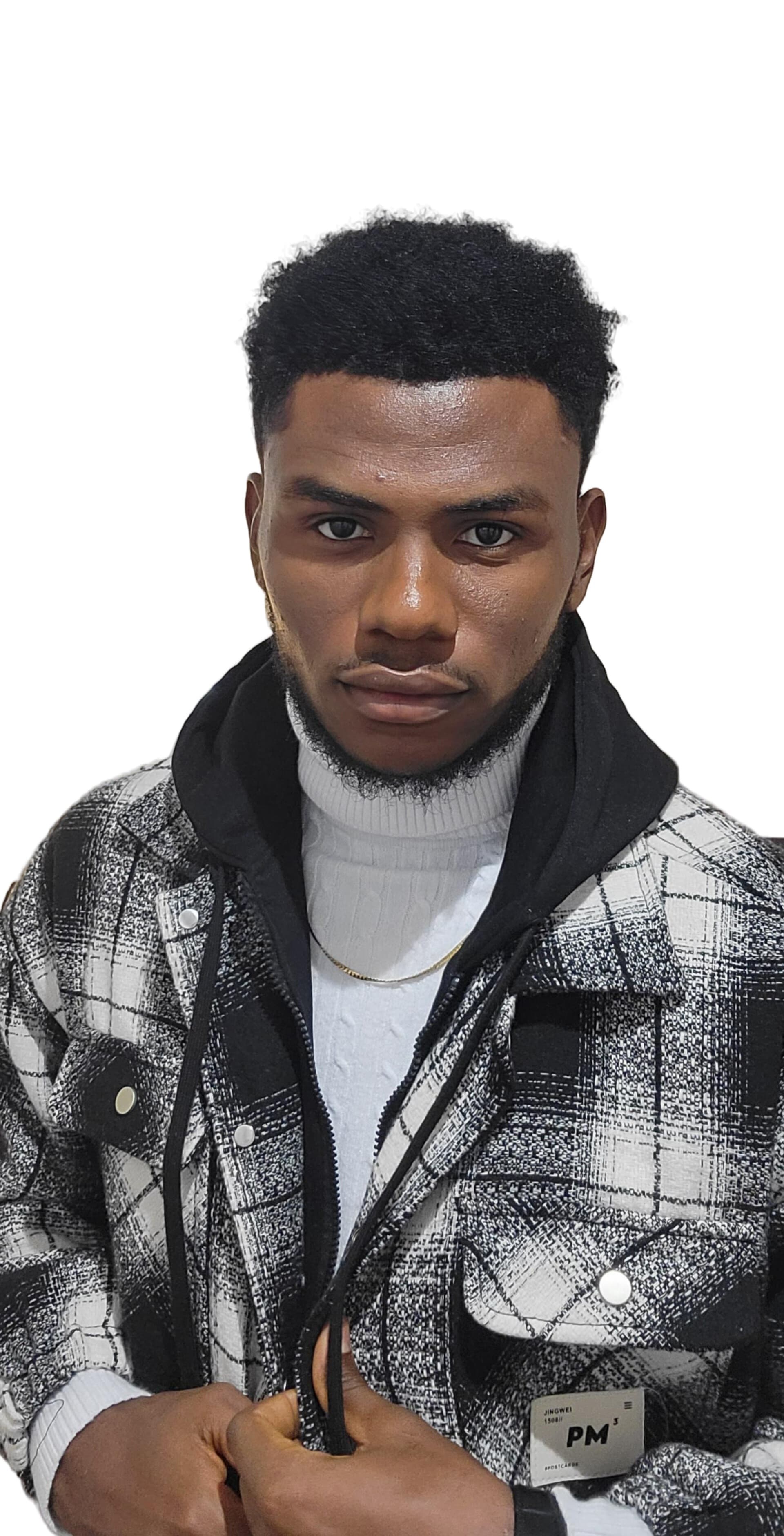
INTRODUCTION
My name is Cletus Oche, a visual artist currently practicing with 2D artworks in ink and acrylic medium. I have an educational background in computer science, and as such, most of my art learning experience has been through personal research and courses. My journey as an artist has been an interesting and challenging one. Of course, there are times when I doubt my choices to remain in the profession, but pushing through is the best way forward.
Can you walk us through your creative process as an artist?
My work is heavily based on drawings, which is where I begin. Usually, I make up to four sketches before moving to the bigger work base. The challenge sometimes is maintaining the same energy contained in the small sketch drawing in the big one.
What inspired this body of work that you are exhibiting?
I think a lot of the inspiration I got for this piece revolve around spirituality, human mind and relationship with the divine.
A number of characters in your works are adorned with jewellery, what does this represent in the overall context of your art?
In some instances, they serve as adornment for the subject while in some other case I prefer to identify the subject through them with their culture.
If not art, what would you rather do?
If not art professionally, then I will definitely do music.
What challenges do you face as an artist?
One challenge in the arts is gatekeeping. As it is a system where galleries and artists work together, most times these galleries believe it’s only through them the artist can be successful hence, deliberately keep collectors from meeting the artists.
Are there artists who inspire you and your work?
Absolutely! Some artist definitely inspire me. Some of them include- Kelvin Okafor, Arinze Stanley, Ioana Pioaru and some others.
What experience do you hope for people who experience your collection to have?
I would prefer each viewer and collector get a new experience where they can even question things they believed before or simply enjoy a bliss of ideas in front of them.
What is the most exciting part of life as an artist?
The most exciting part is also the scariest: knowing that I have the entire freedom to create whatever I want. Exciting because I can discover new things and scary because the outcome is never certain.
Any other words?
Just to add to these, every person’s journey can never be the same, but how we approach our journey can be. So if you are inspired by one of the greats, do not simply copy what they did but how they approached it-in simple words check your values.
October 6, 2025
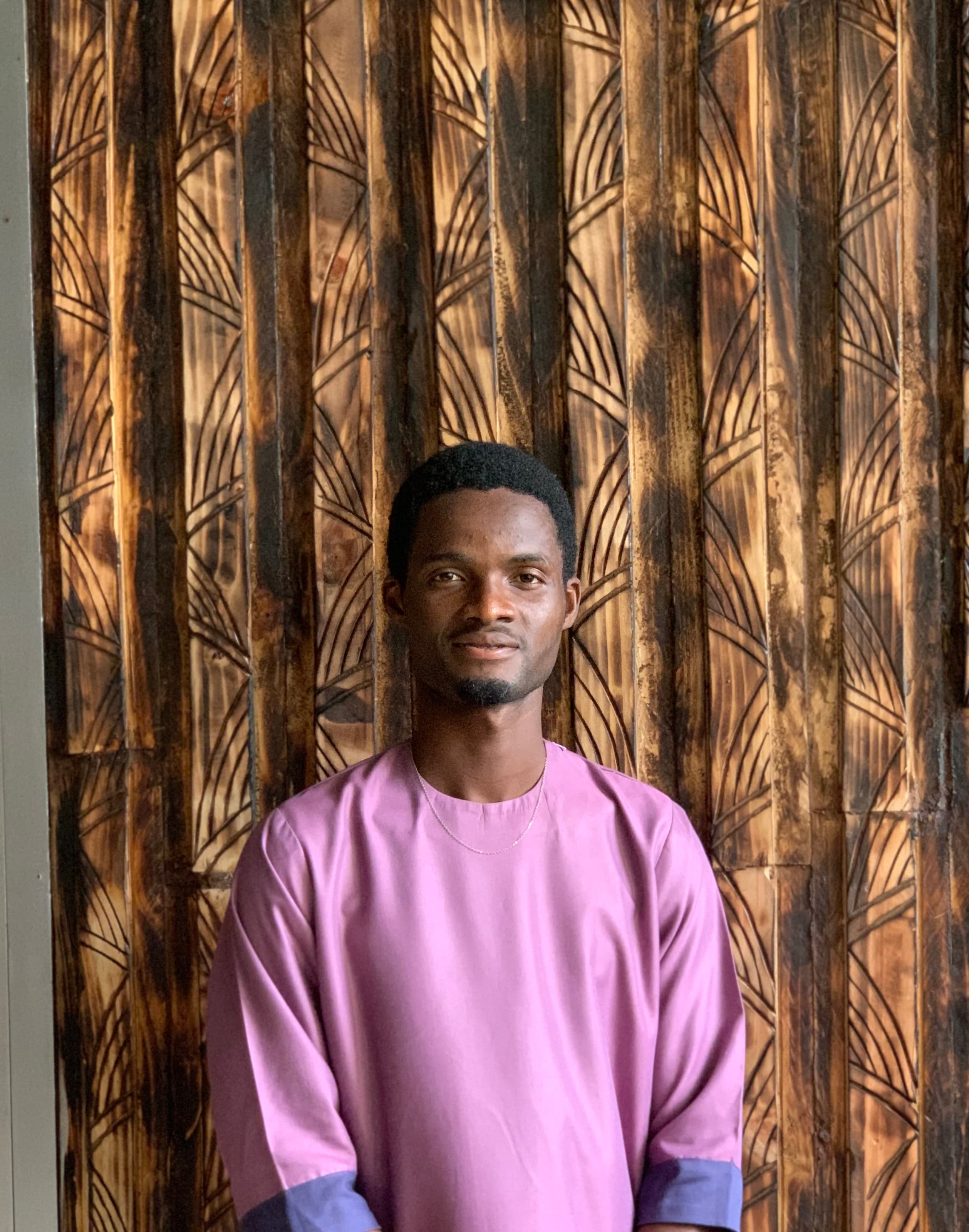
I want my work to serve as a reminder of our culture, especially the aspects that are slowly fading away, without realizing it.
INTRODUCTION
My name is Ashele Israel Akeem. I am a young Nigerian artist and sculptor. My work explores human identity and hidden realities, expressed through my personal style—which blends figurative and abstract forms. I work with materials such as fiberglass, metal, found objects, and anything I can get my hands on.
CAN YOU GIVE A BRIEF BACKGROUND OF YOUR ART JOURNEY?
I started off as a kid with a deep love for drawing and comics. Eventually, I became an apprentice to a roadside artist, which helped sharpen my skills early on. My dad supported my passion and encouraged me to study art at a polytechnic, so I went on to Yaba College of Technology.
Now, I create sculpted works in 3D; pieces you can see, feel, and fully experience
CAN YOU DESCRIBE THE MOOD OR ATMOSPHERE YOU WERE TRYNG TO CREATE WITH THIS ARTWORK?
The works in my collection for this exhibition are rooted in personal experience. They reflect the quiet, often unnoticed actions and emotions we carry, things we do subconsciously that may not be easily seen or understood by others.
HAS YOUR WORK EVOLVED OVER TIME? AND IF SO, HOW?
I started off with free modeling and gradually explored other sculptural techniques like carving and metal work. Along the way, I created some interesting metal pieces, including gan ape, an eagle, and more. Over time, I realized the importance of developing a unique artistic voice, something that could be instantly recognized as mine. So, I began drawing from my personal experiences, which led to the evolution of this new body of work.
WHAT ARE SOME OF THE BIGGEST CHALLENGES YOU FACE AS AN ARTIST?
I would say the main challenge I face as an artist is financial. I have so many ideas that go beyond my current budget, so I often have to scale down my work and hope for funding that will allow me to fully bring my concepts to life.
Another challenge is connecting with the right people in the art space. For many young artists like myself, it's also difficult to find collectors who truly value emerging talent and see our work as something worthy of serious recognition and investment.
CAN YOU DESCRIBE YOUR CREATIVE PROCESS FOR THIS SERIES?
My creative process begins with research, followed by deep critical thinking. After that, I move on to sketching out my ideas before proceeding to the final execution.
Because my work explores actions and experiences that often happen subconsciously, I spend a lot of time reflecting and thinking critically about the concepts I want to express. Some of the pieces in this series also incorporate elements of culture and tradition, which adds another layer of meaning and depth to the work.
HOW DOES YOUR PERSONAL BACKGROUND OR EXPERIENCES INFORM YOUR ART?
I wouldn’t say my personal background has influenced my decision to become an artist or shaped my artistic expression. I don’t come from a family of artists or an artistic lineage. For me, being an artist is simply a true reflection of who I am, an expression that comes from within, independent of my background.
WHAT DO YOU HOPE VIEWERS TAKE AWAY FROM EXPERIENCING YOUR ART?
I want my work to serve as a reminder of our culture, especially the aspects that are slowly fading away, sometimes without us even realizing it. Certain parts of our culture are often seen as outdated or even labeled as bad. Through my art, I want people to experience our culture for what it truly is.
When people engage with my art, I hope it rewires their perception and helps them reappreciate the richness and value of our traditions.
ANY OTHER WORDS?
As artists, it's important to value connection, communication, and relationships, not just with other artists, but with people in general. These interactions can have a powerful impact on your craft and shape your artistic journey in ways you might not expect.
October 6, 2025
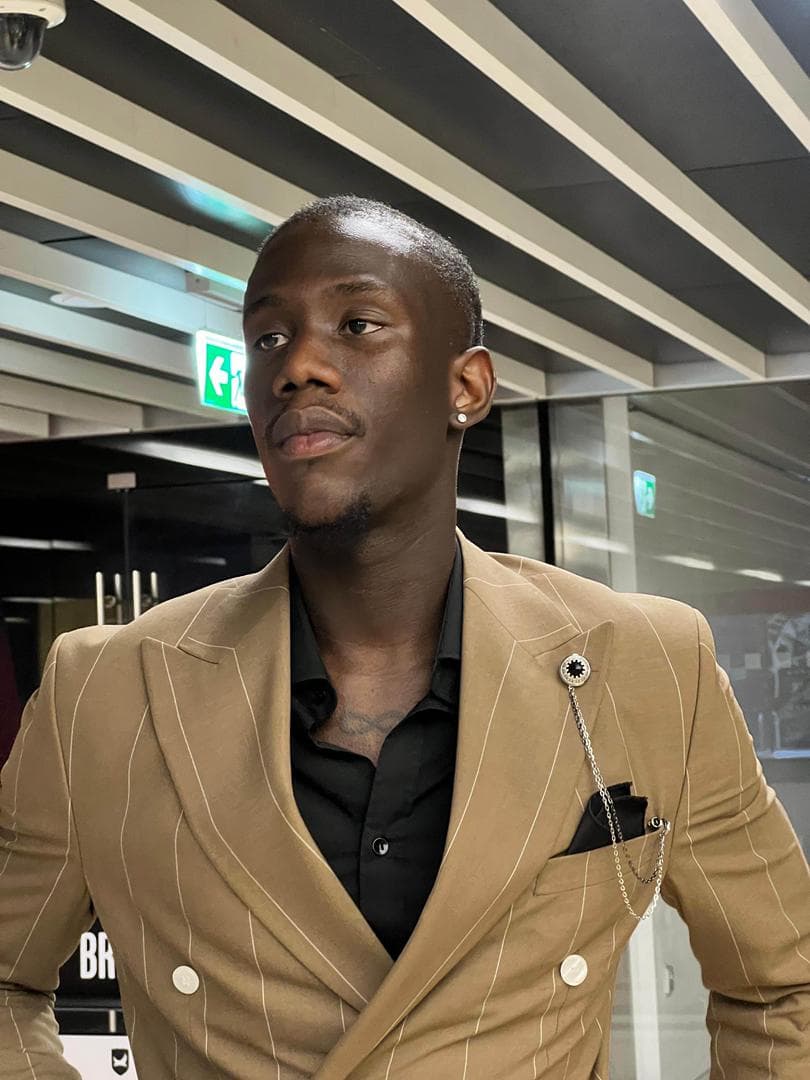
INTRODUCTION
My name is Abiodun David Banjo, I am 25 years old and from Ogun State, Nigeria. I am a visual artist, director, filmmaker, and content creator; simply put, I’m into everything creative. I’ve been shooting and directing videos for about six years and practicing photography for seven years.
I also create art as a form of self-expression and currently have three collections. My style is psychological art; I explore the themes people often shy away from but that deeply touch the emotions.
CAN YOU WALK US THROUGH YOUR CREATIVE PROCESS AS AN ARTIST?
Honestly, my process varies. Most times, I get an idea and quickly jot it down because I know I might forget. Afterwards, I start thinking about how to bring it to life. For example, my first body of work, Cigarette Stories, came to me in 2023, but I didn’t execute it until 2024, one day I simply decided it was time to make it happen.
In essence, my creative process begins with an idea, then finding a way to approach it, and brainstorming until that idea becomes a reality.
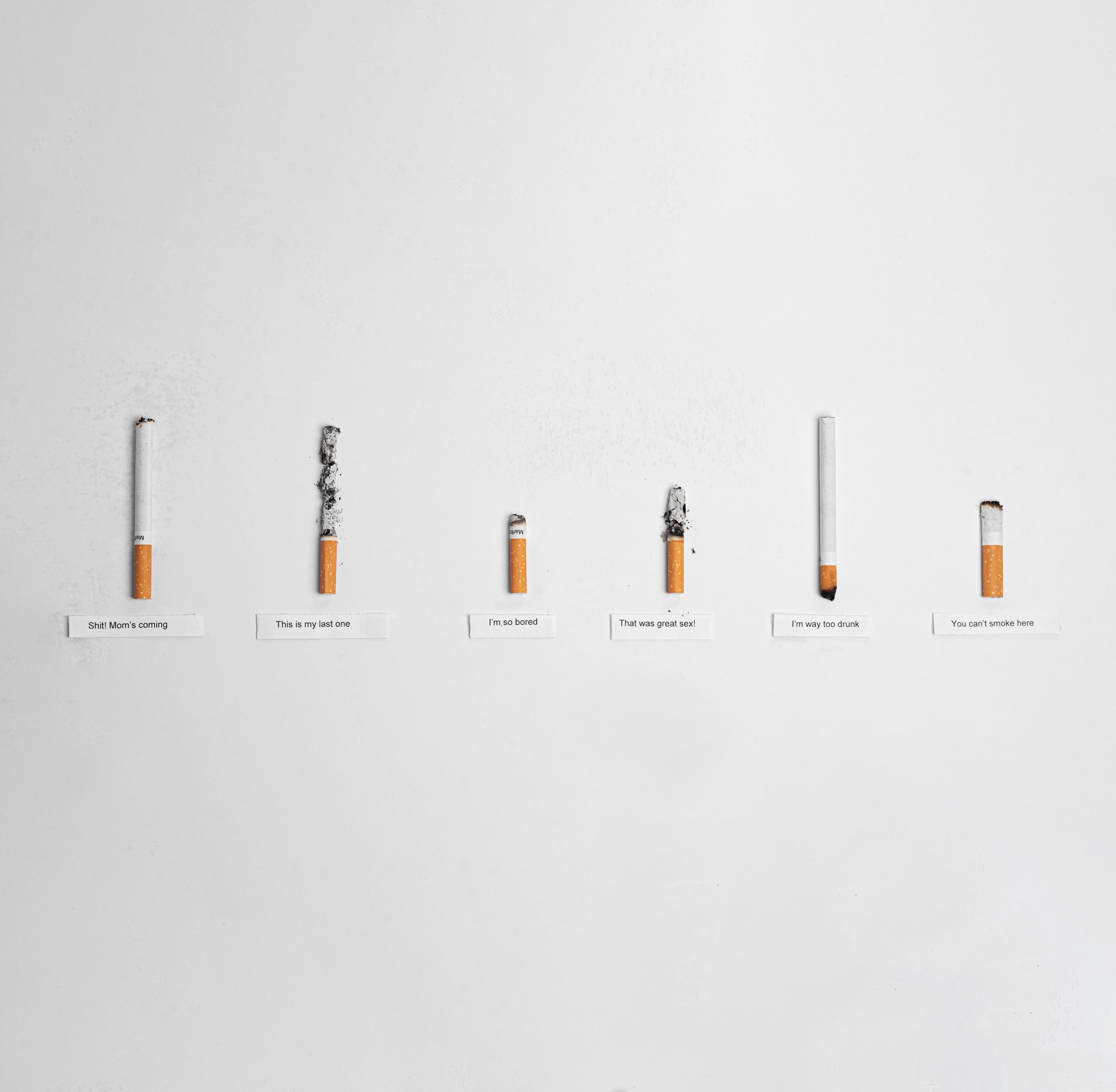
WHAT INSPIRED THIS BODY OF WORK?
It started as a random thought I had while by myself. I asked myself why people rarely have conversations about the phones of those who have passed on. That question became my topic, I wanted to explore the stories of lives lost through the devices they left behind.
In the collection, there is a landline that belonged to an 87-year-old grandmother who died peacefully in her sleep. There’s also a phone with a dent, once owned by someone who died in a motorcycle crash, the damage reflecting the impact of the accident. And then there’s an iPod that belonged to a young person, a reminder that death comes to everyone, regardless of age, and that these devices remain as silent witnesses long after their owners are gone.
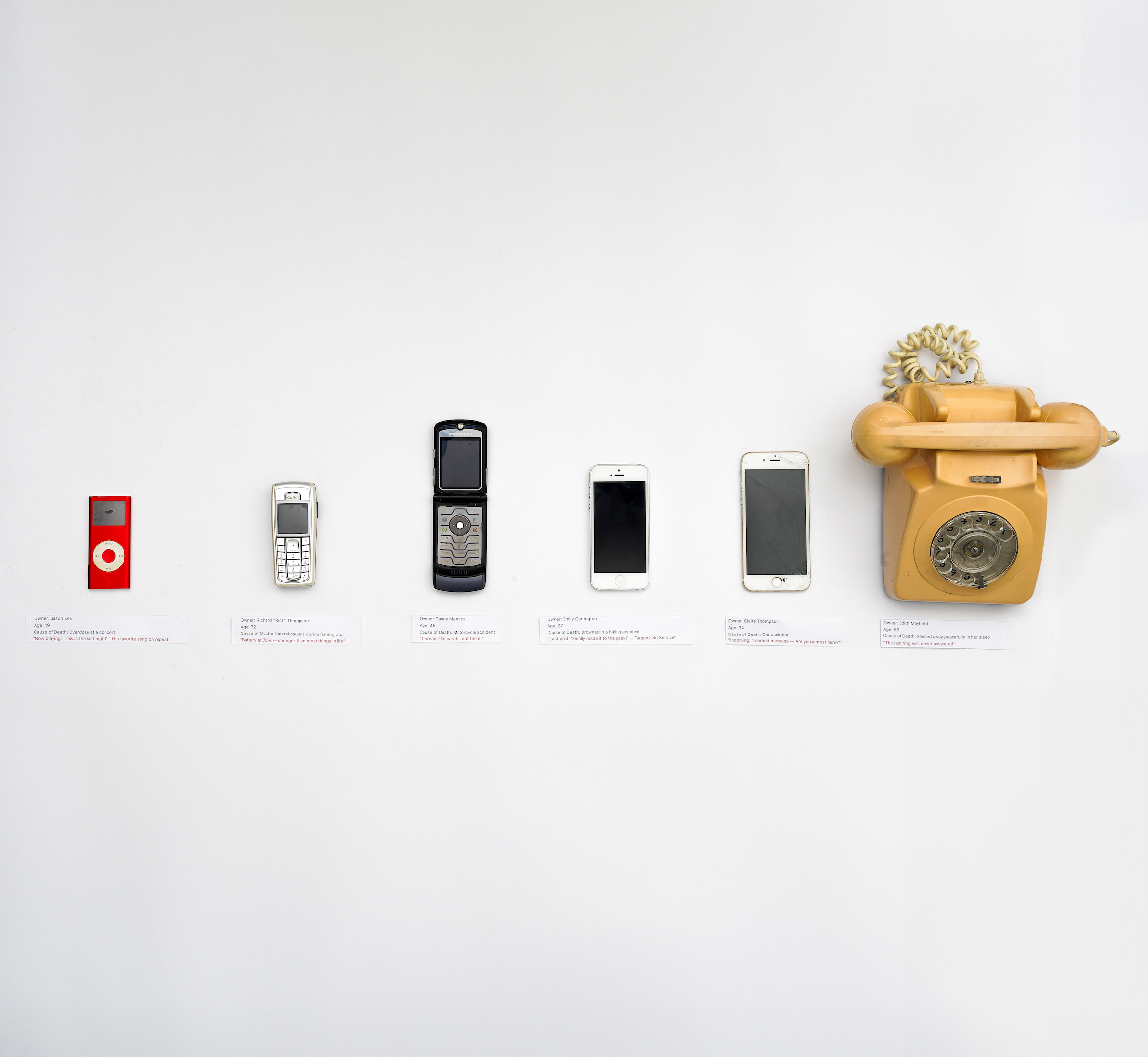
WHAT WILL YOU DO WITH THE DEVICE OF A DECEASED LOVED ONE?
I feel that just as people’s bodies are cremated and their ashes preserved, their phones should also be kept. A phone is more than just a device, it carries traces of a person’s life, from their conversations and photos to the small habits that shaped their daily existence. It becomes a part of a memory box for the deceased.
Most humans hold on to their devices for as long as they want to remain connected to others. Because of this, a phone is often one of the most personal objects someone owns. Preserving it after they are gone creates a box of memories, a personal museum that tells their story in a way words sometimes cannot. It holds the fragments of their connections, their routines, and even their silence, becoming a reminder of both presence and absence.
DO PEOPLE DOWNPLAY YOUR WORK BECAUSE OF THE MEDIUM, PHOTOGRAPHY?
I haven’t really experienced that myself. Most people who encounter my work are usually engrossed in the idea behind the collection, and their thoughts often stop there. They don’t tend to question how the work was created. Maybe that’s because I haven’t yet reached that level.
Still, I don’t believe art should be limited. Artists should be able to present their work in whatever form makes sense to them, as long as they want others to see and experience it. Art deserves to be believed in, and creators should have the freedom to express themselves however they choose.
Take performance art, for example, through dance, artists create movements that may not immediately make sense to the audience, yet there is a raw expression behind it. There is a true emotion that inspires the work and is meant to be felt. That’s why I believe art should never be caged.
WHAT CHALLENGES DO YOU FACE AS AN ARTIST?
My biggest challenge as an artist is the act of creating, the physical part of actually doing the work. The thought process comes easily to me, but execution is where it becomes difficult. For instance, I’ve had an idea for a piece for over six years, yet I still haven’t brought it to life. I’ve even moved houses during that time, carrying the materials for creating it with me each time. Execution is definitely the hardest part, it takes time, patience, and a lot of energy.
I UNDERSTAND THAT YOUR WORK IS NOT THE REGULAR BUT ARE THERE ARTISTS WHO INSPIRE YOU AND YOUR WORK?
I would say there are a few. One person whose work inspires me is Pablo Rochat on Instagram; his creations are very creative and quite different from what you usually see every day. Overall, though, I don’t look up to too many people. Most times, I come up with my own ideas and develop them in my own way.
WHAT EXPERIENCE DO YOU HOPE FOR PEOPLE WHO EXPERIENCE YOUR COLLECTION TO HAVE?
I want my viewers to experience a sense of realness through my work. I see my body of work as an eye-opener, something that encourages people to be more aware and to tap into their third eye, their inner vision. My goal is to unlock a different level of thinking for my audience, allowing them to see life and its realities beyond the surface.
ANY OTHER WORDS?
Nothing is ever too deep, especially for fellow artists. Life is life, and it will always be life. The most important thing is to express yourself freely and unapologetically. You are you. Take what others say lightly, and strive to reach a place where you can express your own thoughts and bring your ideas to life authentically.
October 6, 2025
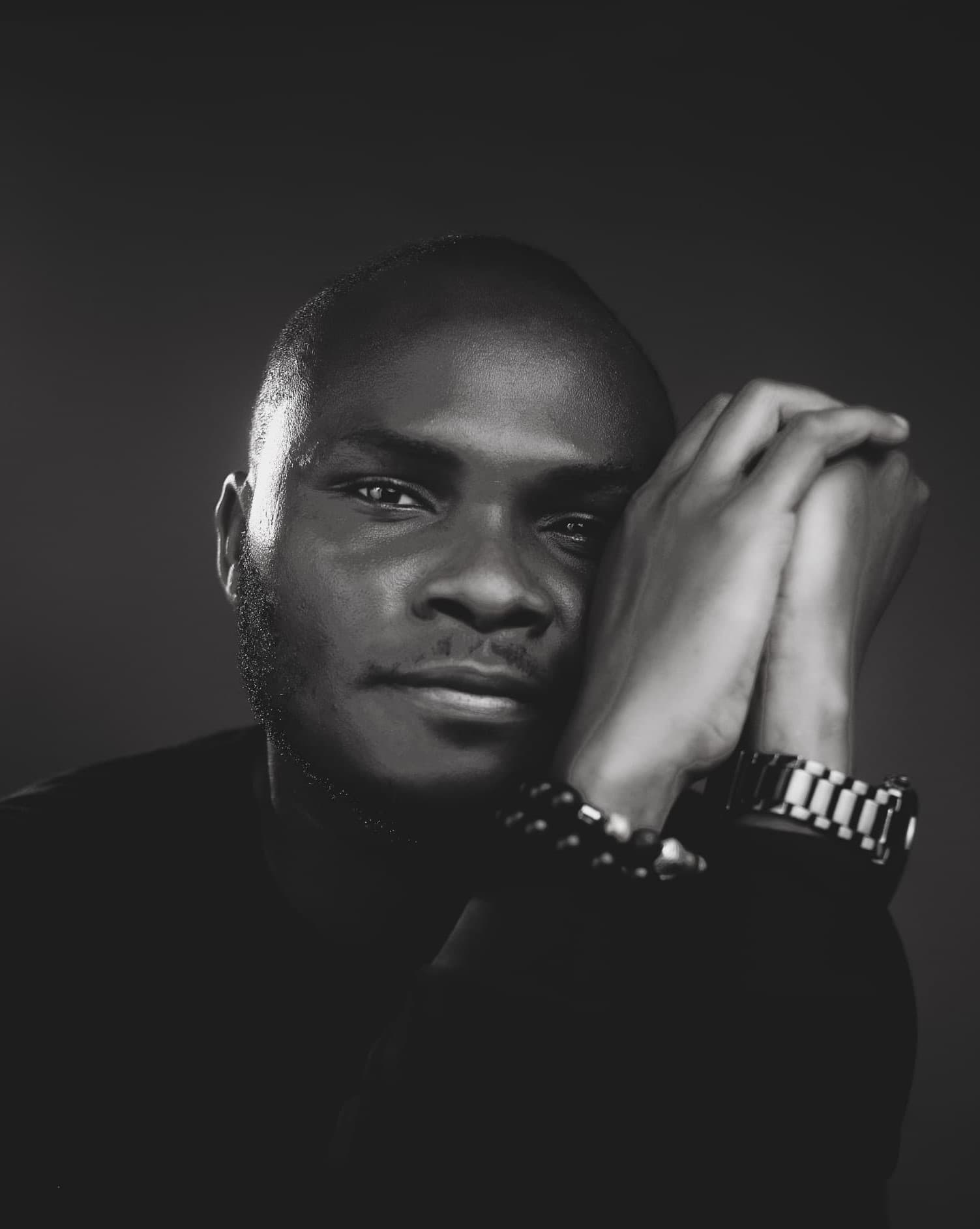
He trained as an optometrist but ended up giving people new ways to see—with paint.
Barnabas Macauly Osagie didn’t always set out to be an artist. Growing up in Benin City, he found joy in sketching action figures in the sand and drawing with pencil and charcoal. He eventually went on to study Optometry at the University of Benin, but art never left him. What began as a quiet passion slowly grew into something much bigger—a language of expression that allowed him to tell stories that felt too personal or complex for words.
Over time, Barnabas transitioned from drawing to painting, exploring realism and then surrealism. His work speaks to themes of family, identity, and the emotional weight we carry in silence. In his Denge Dey Pose series, he reflects on how the absence of fatherhood can shape femininity, and how people struggle to balance being self-sufficient while still needing others. Through each piece, he invites viewers to not just look—but to feel something real. His art is now featured in Identity in Reflection on Creath, where his story continues to unfold.
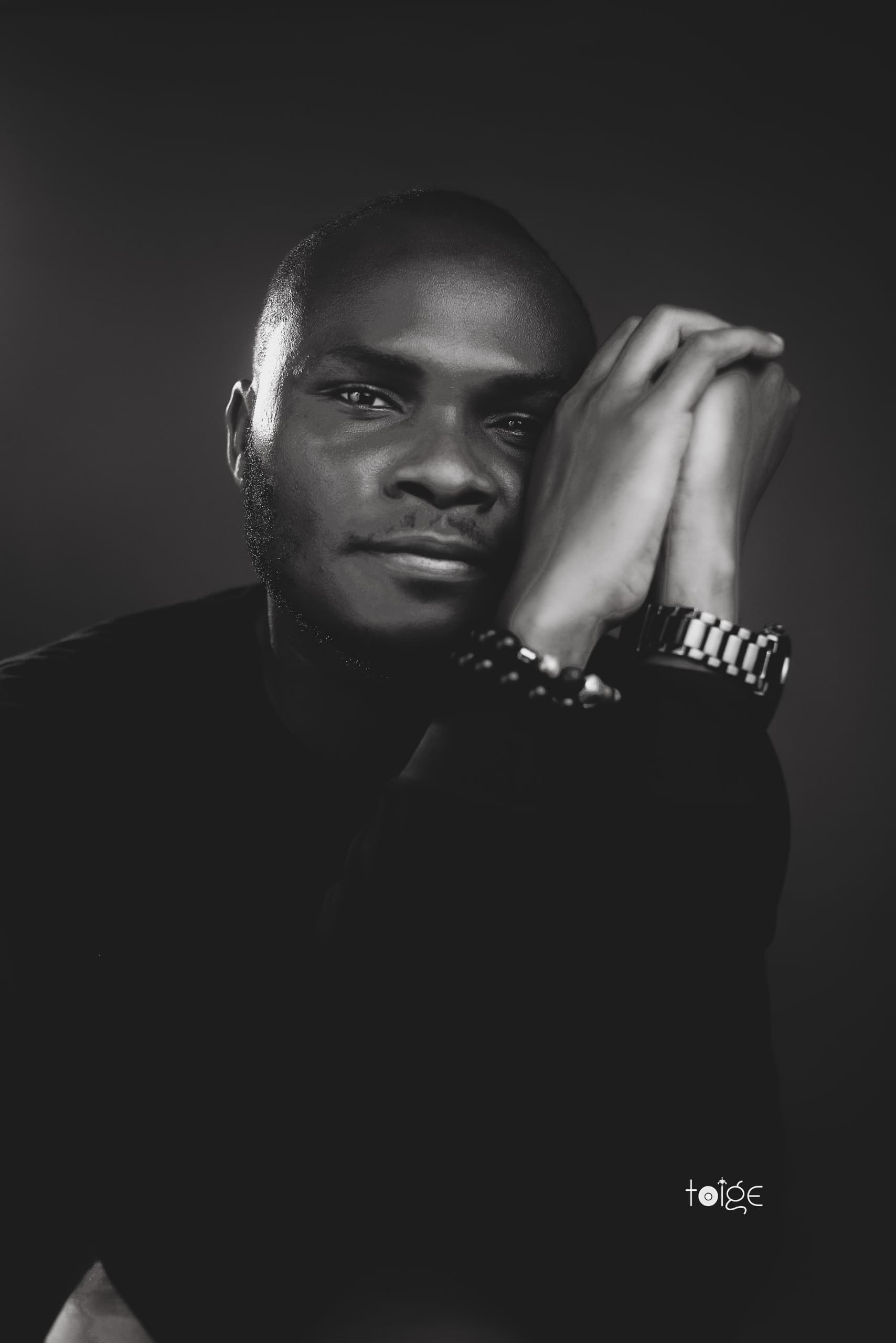
INTRODUCTION
My name is Barnabas Macauly Osagie. I am a visual artist from Edo State, with a focus on Realism and Surrealism. As a multidimensional artist, I work across various mediums of expression. I began my journey using charcoal and lead pencils for drawing, and gradually evolved into working with acrylic and oil paints.
Through my art, I tell stories about family and the vital role of the family unit. I believe that to truly transform society, we must begin with the family—while also recognizing and exploring individuality within it. My work often delves into themes of identity, self-development, and history.
CAN YOU GIVE A BRIEF BACKGROUND OF YOUR ART JOURNEY?
I started out when I was five years old in Benin, sketching action figures on the ground. I realized I was good at what I was doing, and I gradually developed an interest in comics. My friend, Abiodun Yusuf, later introduced me to visual art—particularly drawing portraits of people.
I got into the University of Benin to study Optometry. While I am an eye doctor by training, I was actively nurturing my artistic interests and developing my skills on the side. Eventually, I decided to pursue art fully and underwent an art residency at Olokun Studio, owned by Prince Adelakun. I started working there, and during my time in the studio, I connected with other artists and deepened my drawing skills—though at the time, I didn’t focus much on painting.
My artistic expression has evolved over time. In 2018, I was primarily working with lead pencil on pelican paper. I also used charcoal pencil during this period. From 2018 until the end of 2021, I focused on realism, using drawing as my main medium of expression.
Between late 2021 and early 2022, I transitioned fully into surrealism, still using drawing as my medium. I later began exploring color because I felt black and white limited my expression. I began using both acrylic and charcoal, experimenting with mixed media throughout 2023, though I returned briefly to realism.
In 2024, I moved away from mixed media and focused solely on acrylic. By October 2024, I shifted from realism back to surrealism. This transition was evident in my Empathy Series, which was exhibited at the Next of Kin Exhibition.
In February 2025, I made another shift—this time to oil paint—while continuing to explore surrealism in my work.
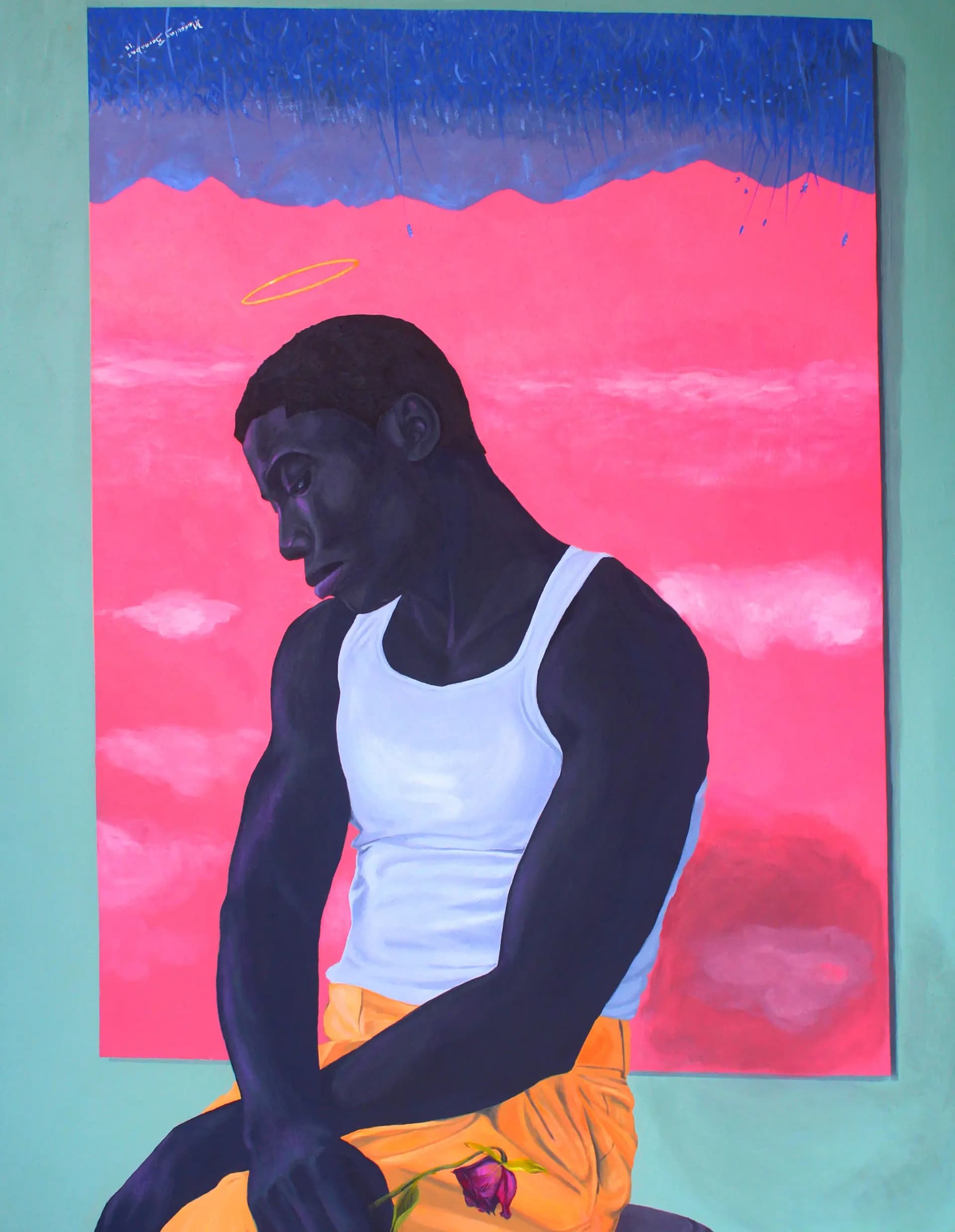
WHAT IS THE STORY BEHIND THE PIECES YOU ARE EXHIBITING?
I use my art to tell stories of humanity, expressing the shared experiences we encounter as human beings.
In my work Denge Dey Pose, I explore the concept of femininity and the beauty of womanhood. I also examine, through observation, how the absence of fatherhood has affected this concept. Many women today are forced to bear burdens they shouldn't ordinarily have to—burdens that should be carried by masculine figures, whether biological or positional. This gap often leads to a loss of femininity. The work serves as a call for men to be men, and for women to be women, so that women can reclaim their femininity and not be subjected to circumstances that diminish it.
In Denge Dey Pose II, I explore the delicate balance between being self-dependent and being dependent on others. What makes us whole as human beings is our ability to understand and maintain this balance. When we become overly self-reliant, it strains our relationships with others. On the other hand, when we are excessively dependent on others, it weakens our relationship with ourselves.
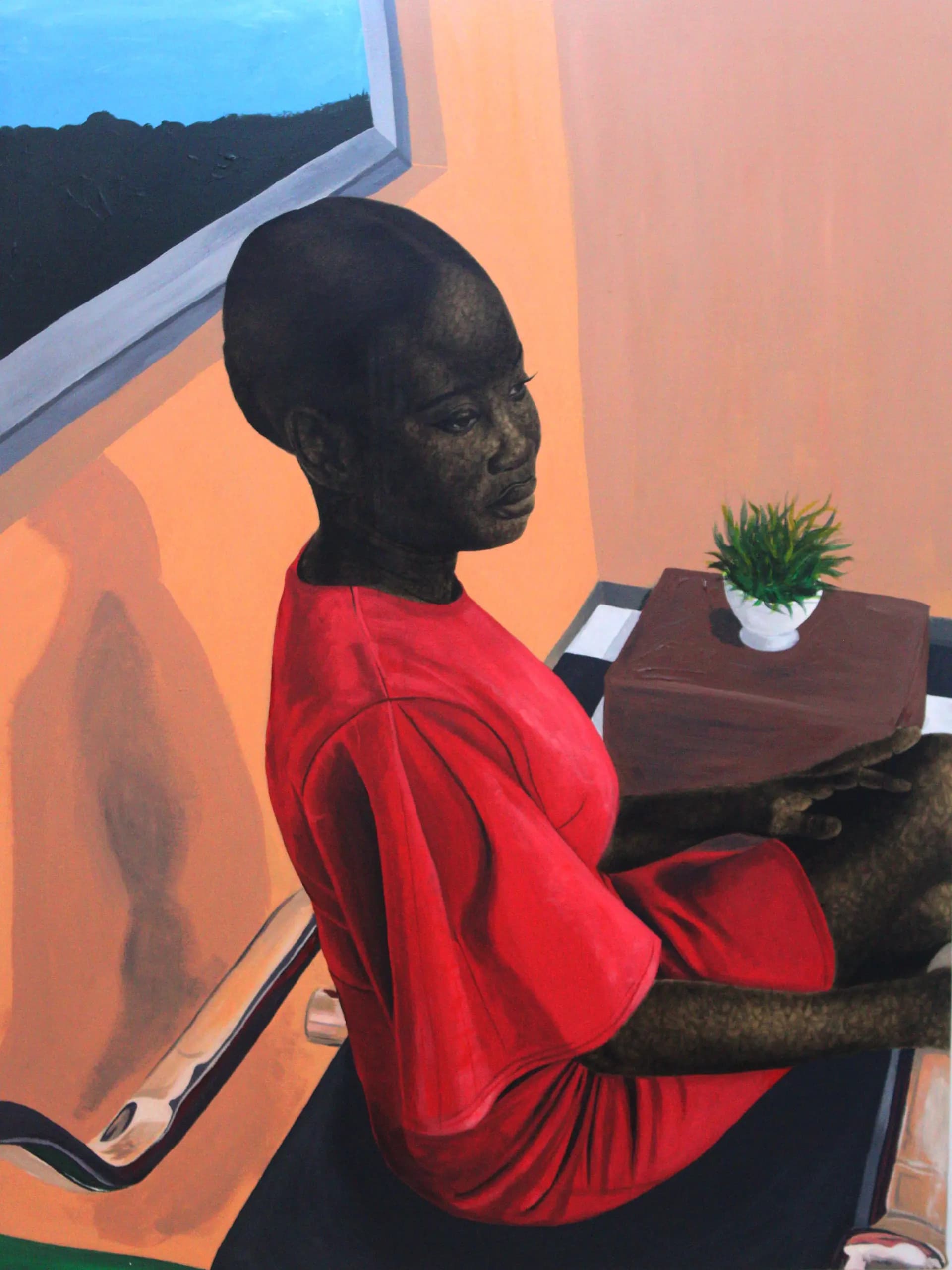
WHAT CHALLENGES HAVE YOU FACED AS AN ARTIST?
One major challenge I faced as an artist was learning to paint. I had not watched or mirrored anyone using painting techniques, as I had always focused more on drawing. So, when I started painting, I was mostly on my own, making mistakes and practicing through trial and error. Navigating painting without guidance was truly challenging.
However, I began to realize I was making progress when I compared my work to that of professional painters. It became clear that I had started to get the hang of it, and that gave me the confidence to keep going.
WHAT DO YOU HOPE VIEWERS TAKE AWAY FROM EXPERIENCING YOUR WORKS?
When people view my work, I want them to feel seen. I believe it is a powerful and fulfilling experience to be acknowledged, to know that you are not alone.
We often find reflections of our experiences in music and movies, and I want my art to offer that same sense of connection. My artworks are reflective, and my goal is for people to see themselves in them; to recognize their emotions, struggles, and stories within the visual language I create.

ARE THERE ANY PARTICULAR ARTISTS THAT HAVE INFLUENCED YOUR WORK?
Different artists have influenced my artistic journey in meaningful ways. One of them is Julius Agbaje, a surrealist artist. When I first encountered his paintings, they felt so familiar—almost like extensions of my own thoughts. I immediately thought, I should be doing this. He influenced me from afar, inspiring me to embrace surrealism more deeply.
Another important influence is Prince Adelakun, from whom I learned the value of drive, ethics, and commitment in the life of an artist. His discipline and approach to the creative process shaped how I view my practice.
Ken Nwadiogbu also had a significant impact. He evolved from drawing to painting and was self-taught. What stood out to me was his audacity to explore new paths—transitioning from engineering to becoming a full-time artist. His journey made me feel seen and reassured me that I wasn’t crazy for making my own bold decision. His willingness to experiment and not remain stuck in one medium encouraged me to do the same.
I was also deeply influenced by my friend Yusuf Abiodun, of blessed memory, who passed away in 2023. His friendship and support were part of my foundation as an artist, and his memory continues to inspire me.
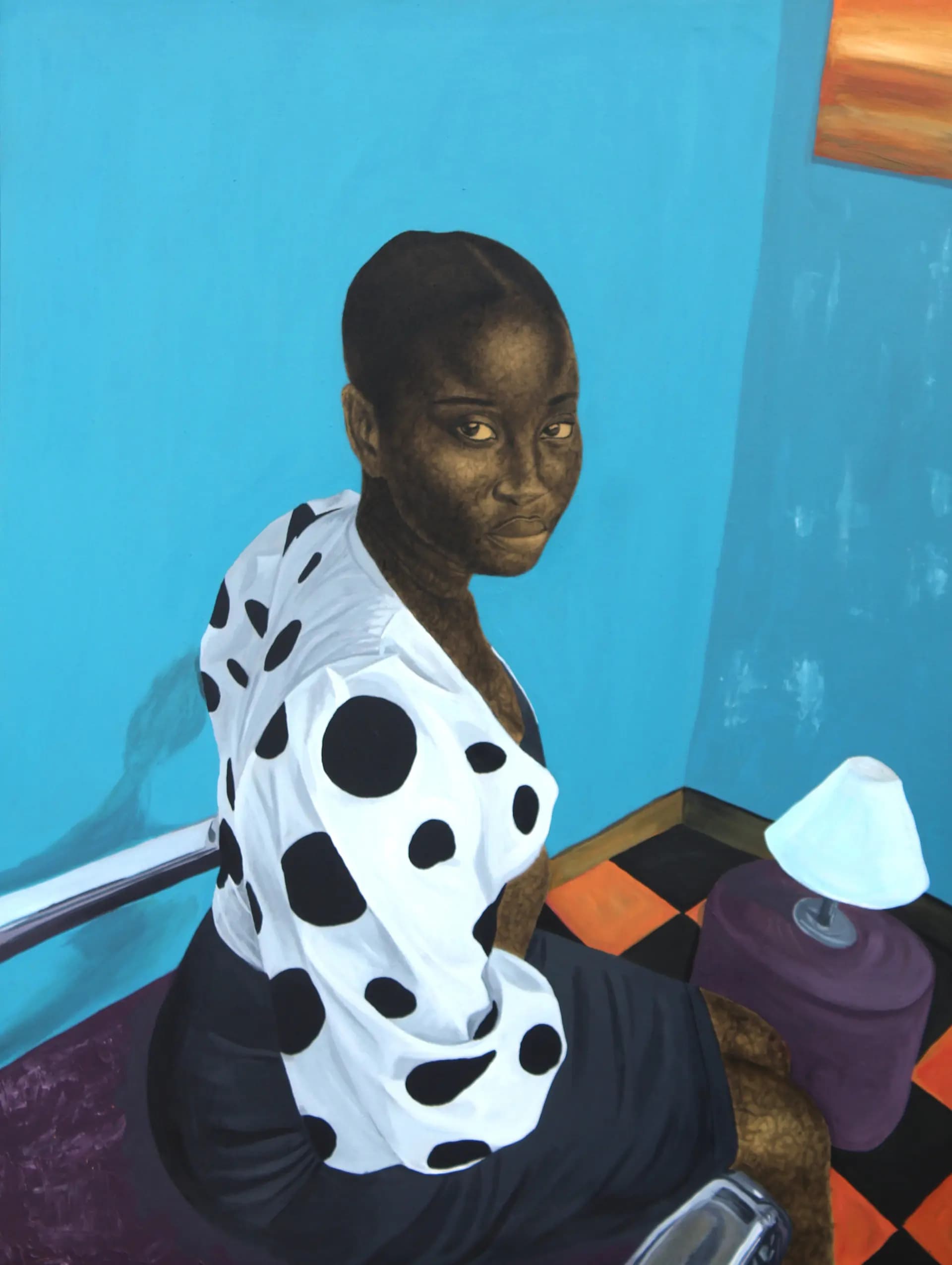
ANY OTHER WORDS?
I want more artists to be simultaneous in their approach to the industry. It’s important not to focus solely on craftsmanship or pushing the boundaries of your creative skill. Artists should also take the time to understand how the industry works; seek out information, be curious, and stay informed.
In addition, artists should read more broadly and expose themselves to ideas beyond their immediate discipline. Let your mind expand. This kind of exposure will help you tell richer, more nuanced stories.
Make friends with people outside your creative field. Watch films, listen to music, explore the world around you, and most importantly, work on your mind. A well-rounded perspective makes for powerful and lasting art
July 31, 2025
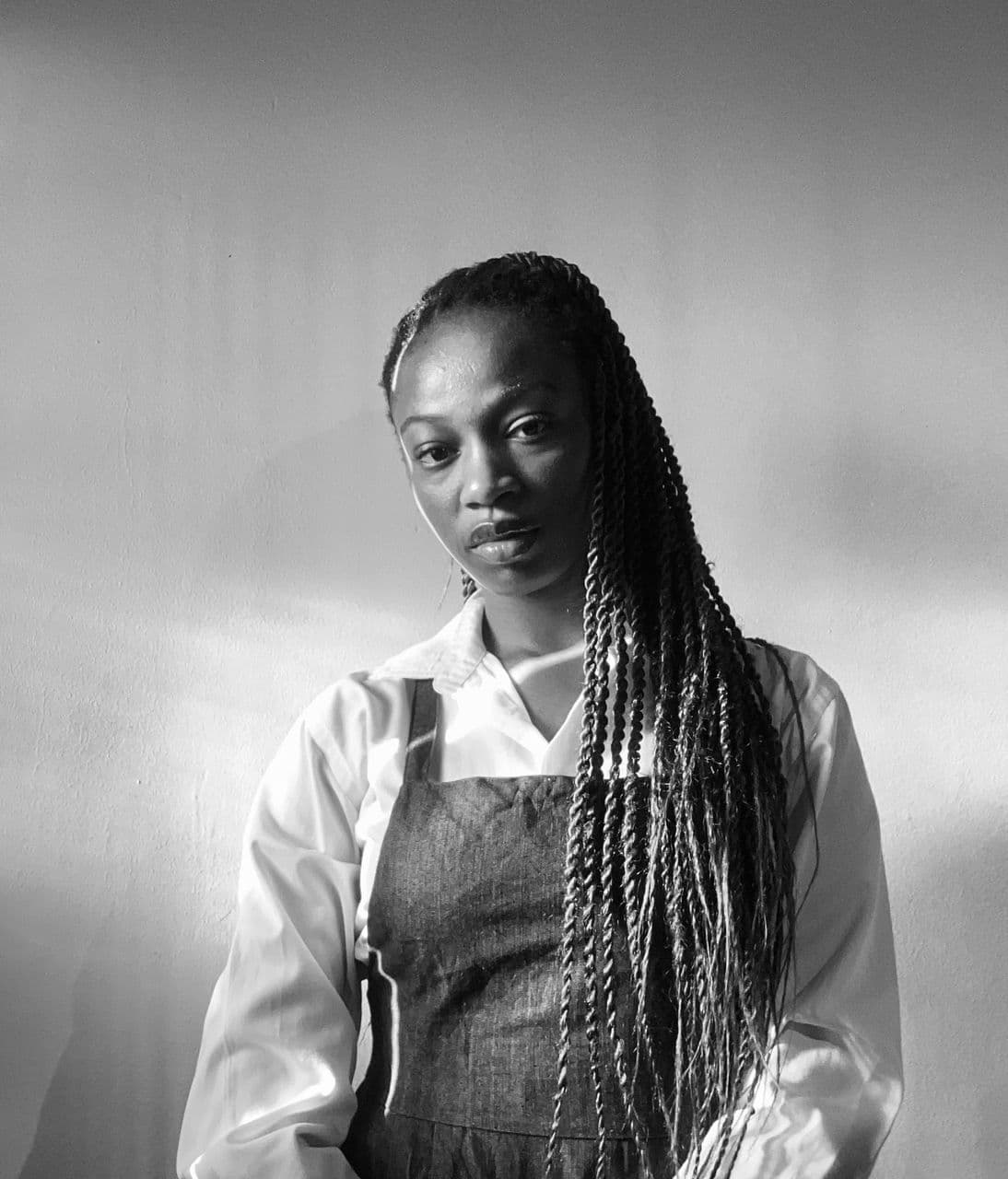
INTRODUCTION
My name is Oluchi Anaghoba. I am a multi-dimensional artist. My primary medium of expression is painting, using acrylic and oil. I also incorporate photographic collage as a form of mixed media- blending painting with photographic elements.
My work centers on the preservation and re-imagination of memories and identity, both personal and collective.
CAN YOU GIVE A BRIEF BACKGROUND OF YOUR ART JOURNEY?
I started off as a child, drawing in primary school, but I didn’t truly consider myself an artist until I decided to study it formally. It was difficult convincing my folks about my decision because art isn't typically seen as a professional career path.
In my 300 level, I majored in painting and began practicing professionally after my industrial training at the Universal Studio of Art. I started with traditional painting using oil and acrylic, and my early works were reflections of moods and emotions- essentially how I felt at the time. Eventually, I transitioned from purely traditional painting to creating collages that document both my practice and that of others.
My art is art for creatives. It represents the struggles I face as an artist and, by extension, the struggles of other artists. Over time, I developed my creative process by interviewing artists, learning about their interests, and using the outcomes of those interviews to create my collages. My art goes beyond me, it tells the stories of others too.
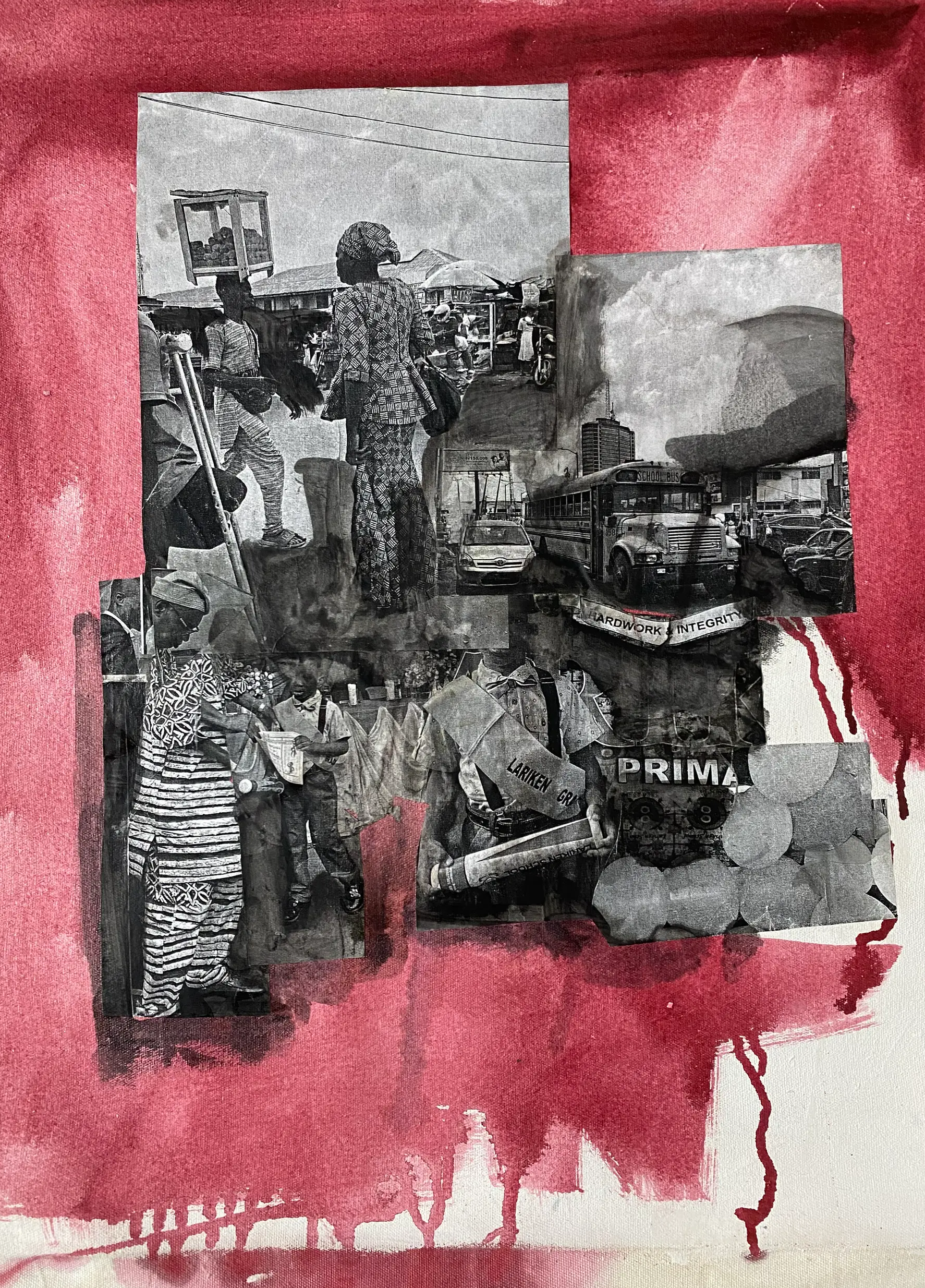
WHAT IS THE MOST CHALLENGING ASPECT OF BEING AN ARTIST?
I have a strong perception of what it means to be a creative; it's a big deal to make something, name it, and be confident in your creation. It’s not an easy thing to do, especially in Nigeria, where pursuing art as a professional career is often seen as unrealistic. There’s a constant need to prove that art is a worthy and viable career path.
There’s also the economic struggle. Art supplies are very expensive, and this creates pressure to abandon one’s art in favor of more profitable paths that offer instant gratification. I’ve seen many talented artists stop creating simply because of the need to make money.
My recent project, The Martyrs, highlights the struggles artists face, how even great artists have had to ‘die’ many times but remained resilient to become who they are today. That’s why my work focuses on the journey artists go through in their careers and celebrates the strength of their craft.
WHAT DO YOU ENJOY MOST ABOUT BEING AN ARTIST?
I particularly enjoy the freedom to create something, define it, and call it what I like—the freedom to be a god in my own space. The confidence and liberty that come with being a creative have deeply influenced the way I see life and how I approach everything I do.
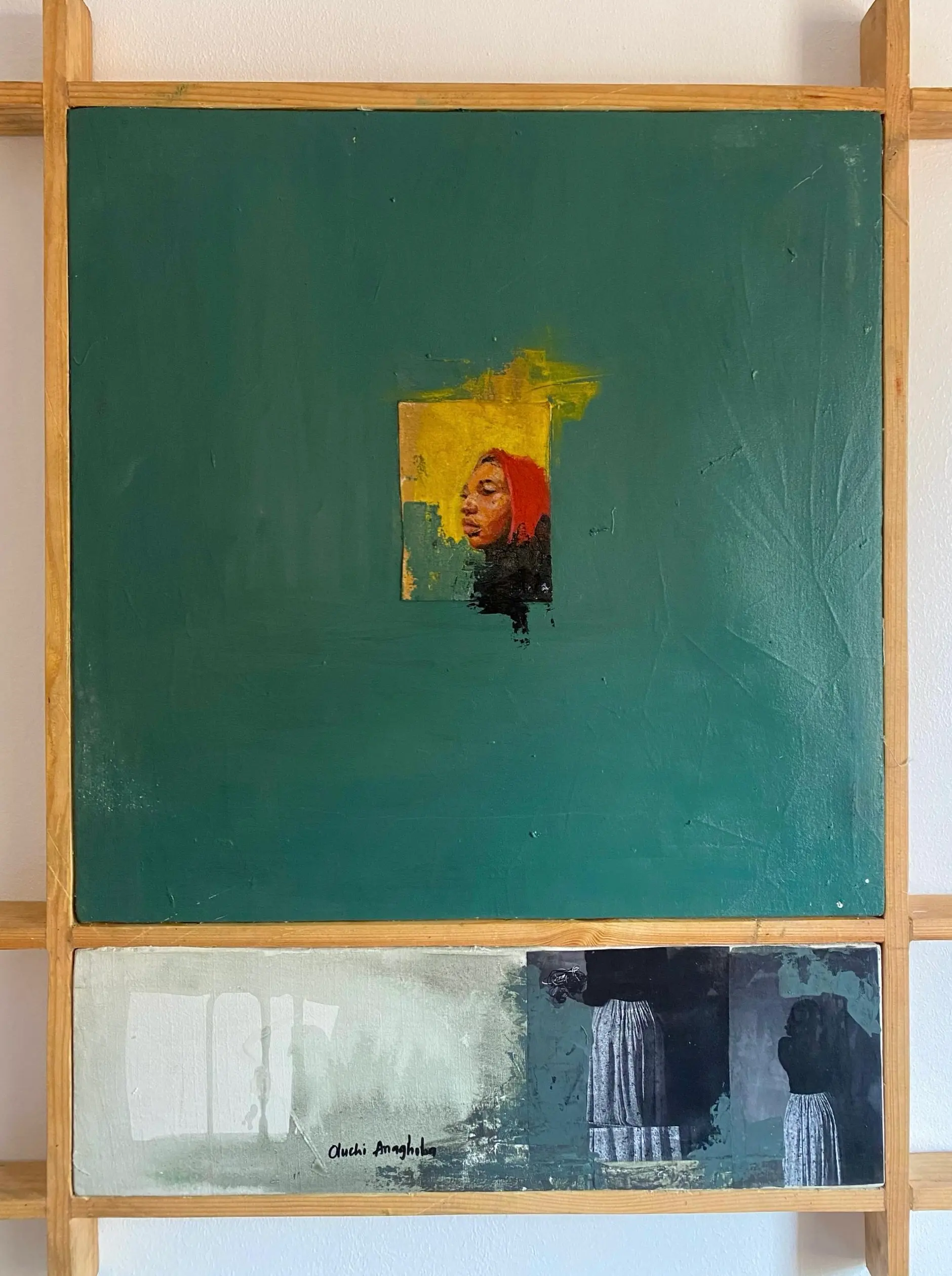
WHAT MATERIAL OR TECHNIQUE DO YOU ENJOY USING THE MOST, AND WHY?
When I created pieces using traditional painting as my medium of expression, I worked with oil, charcoal, oil pastel, and acrylic. I started off with oil colours. Oil allows for more freedom in creating and depicting mood; it’s easier to manipulate and gives you time to work through your expression. Acrylic offers a similar flexibility, but it dries faster, which can be limiting when trying to convey a certain atmosphere. That’s why oil is often easier to work with when the goal is to reflect a mood.
Later, I began working with collage using paper. What drew me to paper is its monochrome quality—black and white—which creates a vintage feel and a sense of assembling memories. Paper is a primary medium for documentation, which aligns perfectly with my core interest: creating art that preserves and documents memories.
WHAT INSPIRED THIS BODY OF WORKS YOU ARE EXHIBITING?
I started the process of “Discarding” in 2022. It represents a phase in the creative journey for artists like me who began by working with many different mediums before eventually finding a niche. I used to work with anything within my reach, but at some point, I wanted to become a more focused and intentional artist.
The inspiration came from reliving my own experience, the process of trying to pull myself together creatively. I began creating the works in 2023 and completed them in 2024.
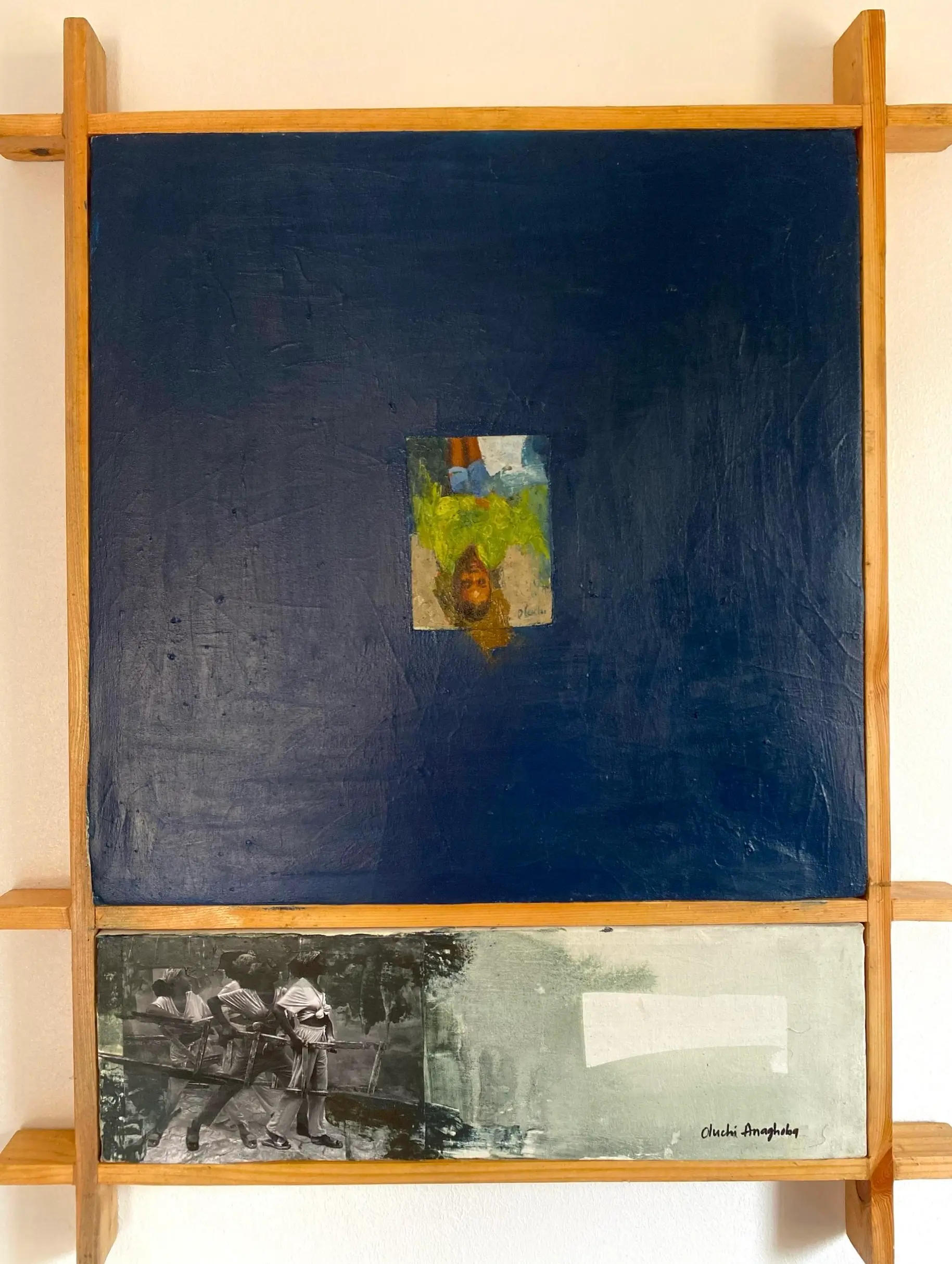
ANY OTHER WORDS?
My words to other artists are this: the sky is big enough for all birds to fly. There will always be room for your creative expression. Don’t stop what you’re doing just because it’s not financially encouraging at the moment, there’s always a way around it. It saddens me when talented artists give up on their art journey.
I want to encourage artists to keep going. Stay true to your art, no matter how little time or effort you’re able to dedicate to it. You can pursue other interests or work other jobs to earn a living, but don’t abandon your passion. Stick with it, it will eventually be worth it.
I also want people to know that my works are for creatives; to see, reflect on, and find themselves through the lens of my art. I hope it inspires them to stay true to their craft and keep creating.
July 16, 2025

INTRODUCTION
My name is Ogunshola Clinton Juwon. I'm an artist- a painter. I primarily work with oil on canvas while mixing in other materials when the piece calls for it. I draw inspiration from life experiences, my environment, and the people around me. Creating art is my passion; I love to do it, it fuels my creative hunger.
CAN YOU GIVE A BRIEF BACKGROUND OF YOUR ART JOURNEY?
My artistic journey began when I was a child with drawing. My dad recognized this gift early on. While I initially thought about becoming a bank accountant, my dad advised me to consider a career as an artist. Before that decision, I was already an apprentice to an artist in Badagry, I would go to learn from him after school.
I then pursued formal art education: I earned my National Diploma (ND) in General Art from the Federal Polytechnic Ilaro, completing my Industrial Training (IT) at The Universal Studios of Art. Subsequently, I proceeded to Yaba College of Technology, where I focused on Painting for my Higher National Diploma (HND).
Today, I am fully dedicated to my practice as an artist. While the journey hasn't been smooth, it has certainly been a beautiful one.
CAN YOU EXPLAIN MORE ABOUT THE SYMBOLISM USED IN YOU PIECE?
The Tornado-like image represents the inner chaos we all experience, and it powerfully mirrors my own life and journey as an artist. It also captures the sharp contrast between that chaos and a state of peace.
Crucially, it emphasises that chaos is a constant presence I've navigated throughout my life—but how I've navigated it has changed. Some chaotic periods I've overcome through calmness; others I've met with a fight. There have also been times when the chaos simply left me weary. On the canvas, I decided to represent all these different responses.
WHAT DO YOU HOPE VIEWERS TAKE AWAY FROM EXPERIENCING YOUR ART?
I want viewers experiencing my work to feel a deep connection. This connection operates on multiple levels. My aim is for the art to come alive in the viewer's mind, allowing them to connect not just with the final piece, but with the very process: the actions I took as the artist, the thoughts moving through my mind – all captured in motion. They experience the turbulence, the motion, the doubt, the uncertainty, the double-mindedness.
Crucially, I also want viewers to feel seen. Through this deep resonance with the work, I hope it brings them to a state of stillness or calmness. They perceive the sacredness within the piece, and this ignites a spark of hope – the hope that they, too, can navigate their own storms.
WHAT MAJOR CHALLENGES DO YOU FACE AS AN ARTIST?
Like many artists, I face challenges in consistently finding inspiration for new works. Navigating the path of becoming an artist itself also demands immense courage and determination to reach greatness.
The collection I created right after my HND program emerged from a profound phase of doubt and uncertainty. Questions like "What's next?" and the overwhelming task of entering the professional art space. Frankly, it was a challenge. But I fought hard, refusing to let these circumstances define me. Instead, I poured my doubts directly onto the canvas, transforming my challenges into the very substance of the art I made.
Practical hurdles exist too. Sourcing materials can be difficult, though I prepared ahead before graduation to secure supplies. The bigger challenge then was finding workspace. Yet, echoing a theme in my art, breakthroughs do come. Challenges are eventually overcome. Central to this resilience is my faith – the crucial guidance of God, who is the captain of my ship.
IS THERE ANYTHING YOU WILL LIKE TO CHANGE ABOUT ANY OF YOUR PIECES?
A piece is never finished for me, but as an artist, you must know when to stop. There is an image of what you envision to create and while at it, you will know when to stop, when you know that the work is okay. There is a creator hunger in me so it goes beyond creating for an audience, I primarily create for me. When a work is still in my possession and I feel a creative hunger towards it and retouch some part of the work that I feel should be touched. But once a work leaves me, that it is, there is nothing left to be changed.
ARE THERE ANY PARTICULAR ARTISTS THAT HAVE INFLUENCED YOUR WORK?
My artistic journey has been profoundly shaped by the people I've encountered in the art scene, especially those who have tutored me. I deeply acknowledge the influence of Mr. Awesu Gafar, under whom I served as an apprentice, along with my lecturers and instructors during my Industrial Training. Their guidance has been invaluable to my practice.
Beyond these direct teachers, I've also actively sought mentors in specific areas of an artist's life. For insights into lifestyle, ethics, artistic work, and navigating the art market, I turn to Mr. Abiodun Olaku and Mr. Adebayo Atanda – figures from different generations. I've been fortunate to communicate directly with both, hearing their perspectives on art, seeking their counsel, and sharing viewpoints. This engagement goes far beyond simply viewing their existing artworks and has benefited me immensely.
ANY OTHER WORDS?
Artists must be bold, courageous, and relentlessly hardworking. Boldness is crucial for success, yet it's rarely taught. I know this firsthand: early on, I possessed the craftsmanship but lacked the courage to fully claim my creations. I was held back, overly concerned with others' perspectives.
This is why I believe renowned artists have a vital role: to guide the emerging generation. They can instill the courage needed for younger artists to pursue their vision fearlessly.
While technical skills are essential, they aren't enough. Equally important is the courage and confidence to speak about your work; to articulate its meaning and value, both to others and to yourself. This conviction in your art is fundamental.
July 16, 2025
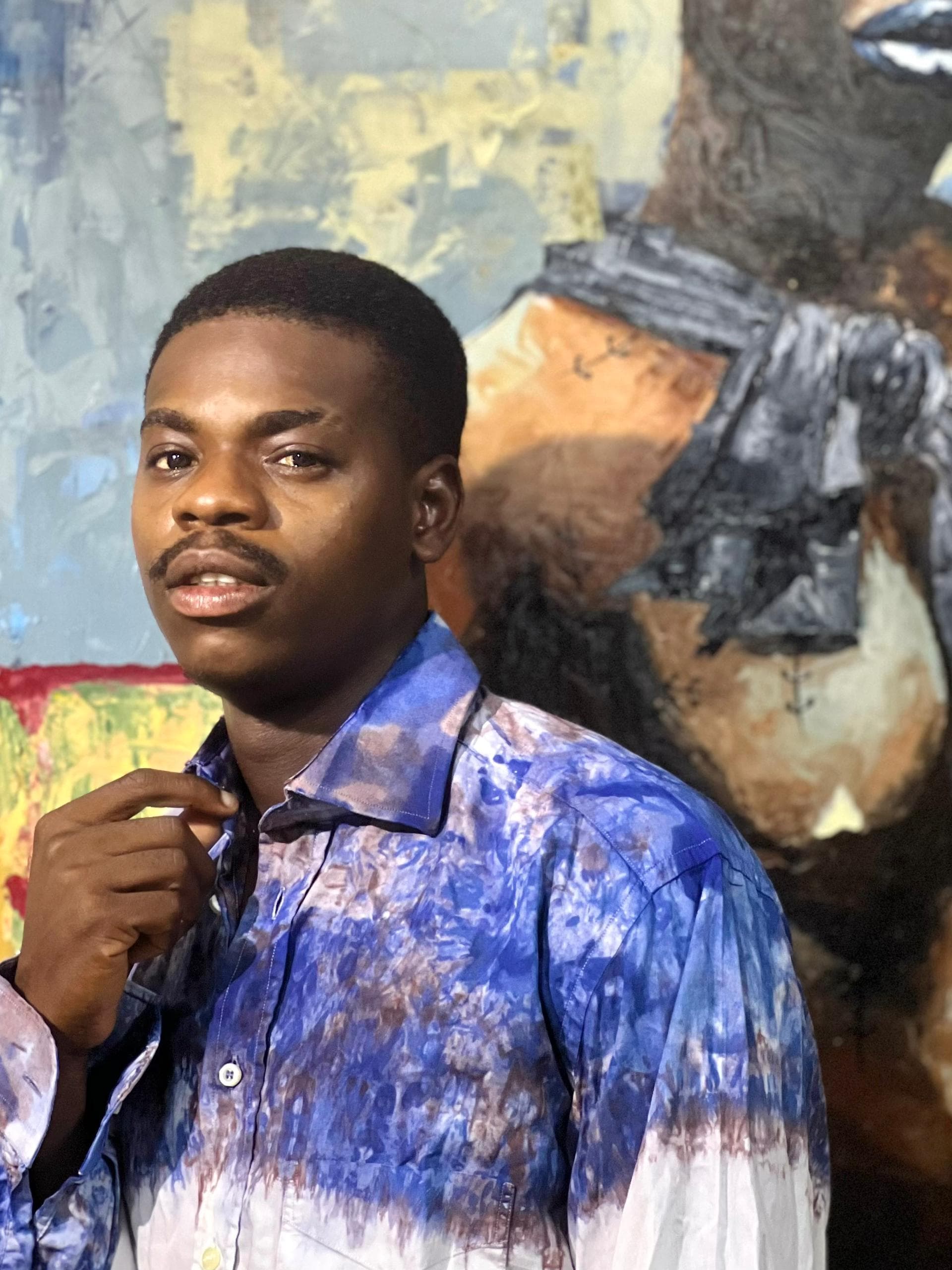
MESAKWU SEJIRO PAUL
I am Egun, and people often view us as backward,” says Mesewaku Sejiro Paul, a Nigerian contemporary artist using his work to rewrite the overlooked history of his people. Through layered mixed media—combining oil, acrylic, charcoal, and sculpture—Sejiro explores the weight of identity, cultural erasure, and the scars left behind by the Atlantic Slave Trade
Deeply rooted in the heritage of Badagry and shaped by the resilience of the Egun people, Inspired early on by his father, a sculptor, and the cultural pulse of his hometown, Sejiro’s artistic language has evolved into a visual archive—reclaiming overlooked stories and symbols from the Atlantic Slave Trade and reframing how the Egun are seen and remembered.
Now based in Nigeria, Sejiro continues to create from a place of deep conviction, using art to challenge stereotypes and preserve culture. His pieces have been shown in group exhibitions exploring African identity, and he remains committed to building a legacy of truth, healing, and creative freedom.
Creath spoke with Sejiro about his journey from painter to storyteller, how blue became a recurring symbol in his work, and why he believes true art should outlive its creator.

INTRODUCTION
My name is Mesewaku Sejiro Paul. I am a contemporary artist. My works are mostly mixed media, combining oil, colour, acrylic, and charcoal. I am also a sculptor—I carve wood and work with fiberglass.
CAN YOU GIVE A BRIEF BACKGROUND OF YOUR ART JOURNEY?
My dad is also an artist, a sculptor, and he was my first point of influence. I was also deeply inspired by my community and the rich cultural heritage in Badagry. Historical sites such as the First Storey Building, the Slave Barracoon, and the Point of No Return all stand out to me and continue to resonate deeply.
I am Egun, and people often view us as backward. Through my work, I aim to rewrite that narrative by telling our stories and showing that we are much more than what people imagine.
WHAT IS THE SIGNIFICANCE OF THE COLOURS, SHAPES AND TEXTURES IN YOUR WORKS?
The use of blue in my work highlights key parts of the human body; the hands, legs, ears, and mouth, especially as it relates to the Egun people. The hands symbolize the ability to farm and feed oneself.
The patches on the face represent the struggles of the Egun people and what they endured, particularly during the Atlantic Slave Trade, where human lives were exchanged for mirrors, umbrellas, and alcohol, objects that now stand as symbols of oppression.
The mouth represents the silenced voices during the slave trade era, when people were forced to work on farmlands with their communication intentionally restricted to prevent them from scheming their way to freedom.
Life is not smooth. Everything we go through leaves us with scars; reminders and lessons, but we continue to move forward, regardless of how bruised we are.
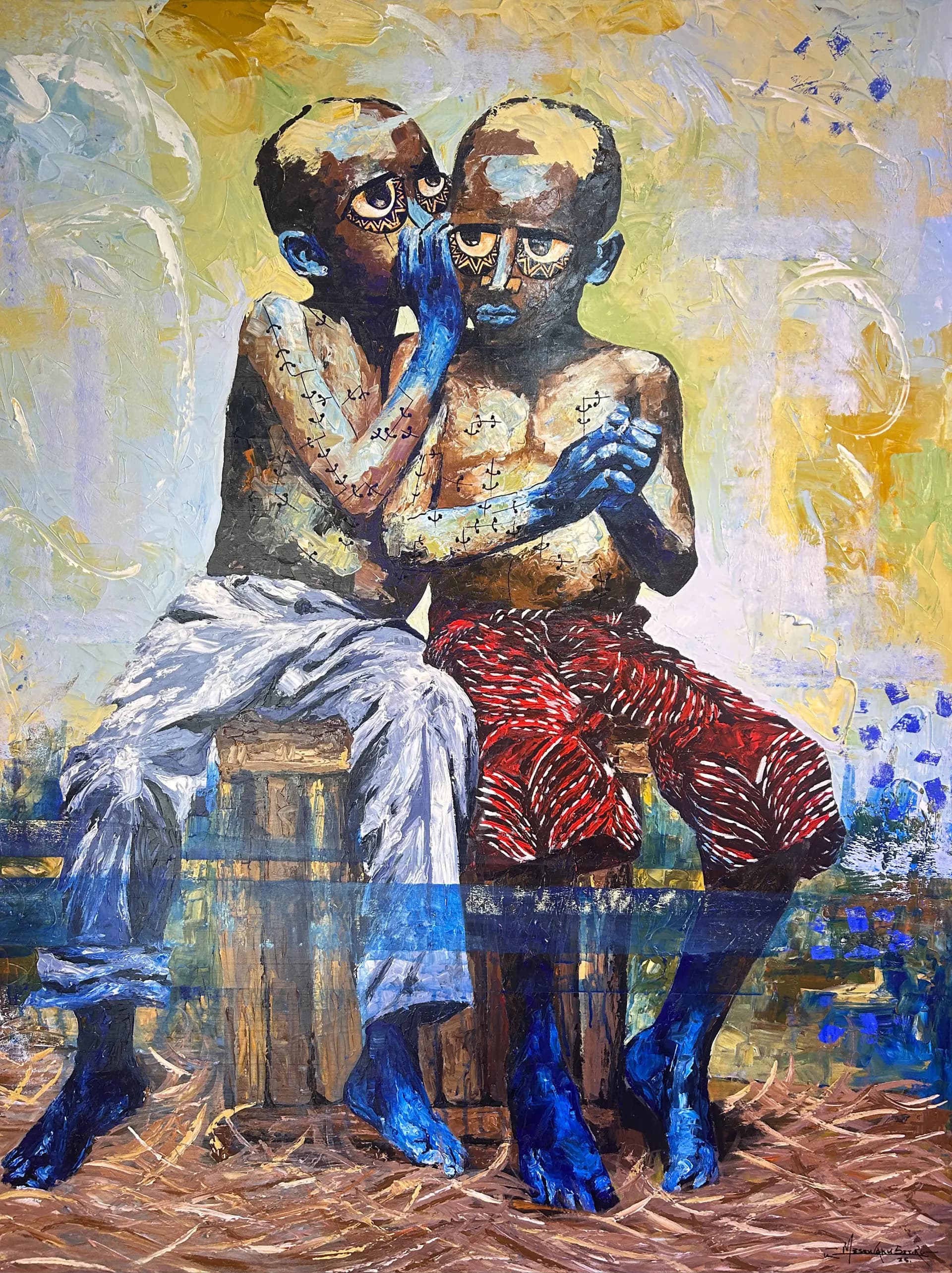
HOW DOES YOUR WORK FIT INTO THE OVERALL THEME OF THIS EXHIBITION?
My art is centered around the identity of the Egun people, what defines us: our culture, our clothing, our chains, our struggles, and even the way we carry our babies. It is a reflection of who we are and what exists among us as a people. I explore the different phases of our lives and how they have come to shape our collective identity.
HAS YOUR WORK EVOLVED OVER TIME? AND IF SO, HOW?
Before, my works didn’t really speak to anything in particular. There was no deeper meaning beyond the surface, and I wasn’t addressing any issues, I was simply painting. Then in 2022, I attended the Voodoo Festival in Benin Republic. I was fascinated by the cultural displays; the festivities, boat regatta, Ague, among others.
Before that, I often mixed European concepts with our culture, but I later realized that it was a subtle form of cultural slavery. I also began to lean towards societal issues such as profiling and stereotypes—how people are judged solely by appearance while their actions are overlooked.
Returning to where my family originally comes from was a moment of deep realization. It made me see just how rich and powerful our culture truly is. That experience is why my work now focuses largely on the history and culture of my people.
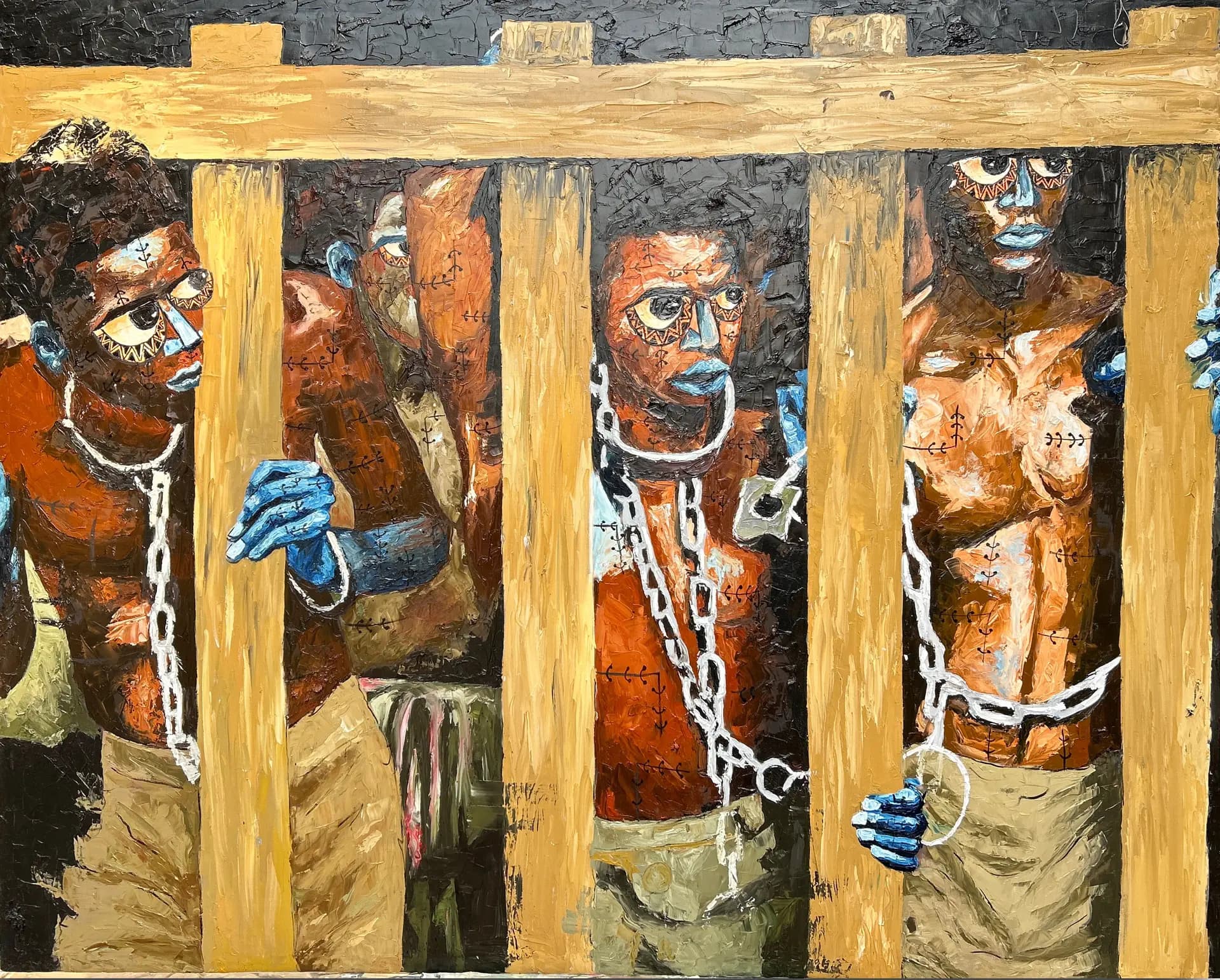
WHAT DO ENJOY THE MOST ABOUT BEING AN ARTIST?
I enjoy the freedom that comes with doing what I truly want to do. I'm not bothered about chasing a job. I love making art so much that I could do it for free. Art is an expression of how I feel—my emotions, everything—I can pour it all into my painting.
Even if I’m not profiting from the works I create, I don’t mind. I just love to paint. I earn from other artistic expressions like interior decoration and painting wall murals, and that helps take the pressure off. It allows me to create freely, without desperation, and truly express myself.
WHAT MAJOR CHALLENGES DO YOU FACE AS AN ARTIST?
I would say marketing, as an artist, and properly putting my work out there is one area I’m still growing in. Because I’m not so focused on the money, I see my art more as a tool for impact, something that will outlive me. My art is my legacy. That’s why I consider being an artist a blessing; it’s transgenerational. For this reason, I don’t really see anything as a fundamental challenge when it comes to my art.
ANY OTHER WORDS?
I believe artists shouldn't sell their works simply because they need money. I know that might sound like a privileged thing to say, but I think there should be integrity and a certain standard to your craft and output.
Overall, work hard and always put in your best.
July 11, 2025
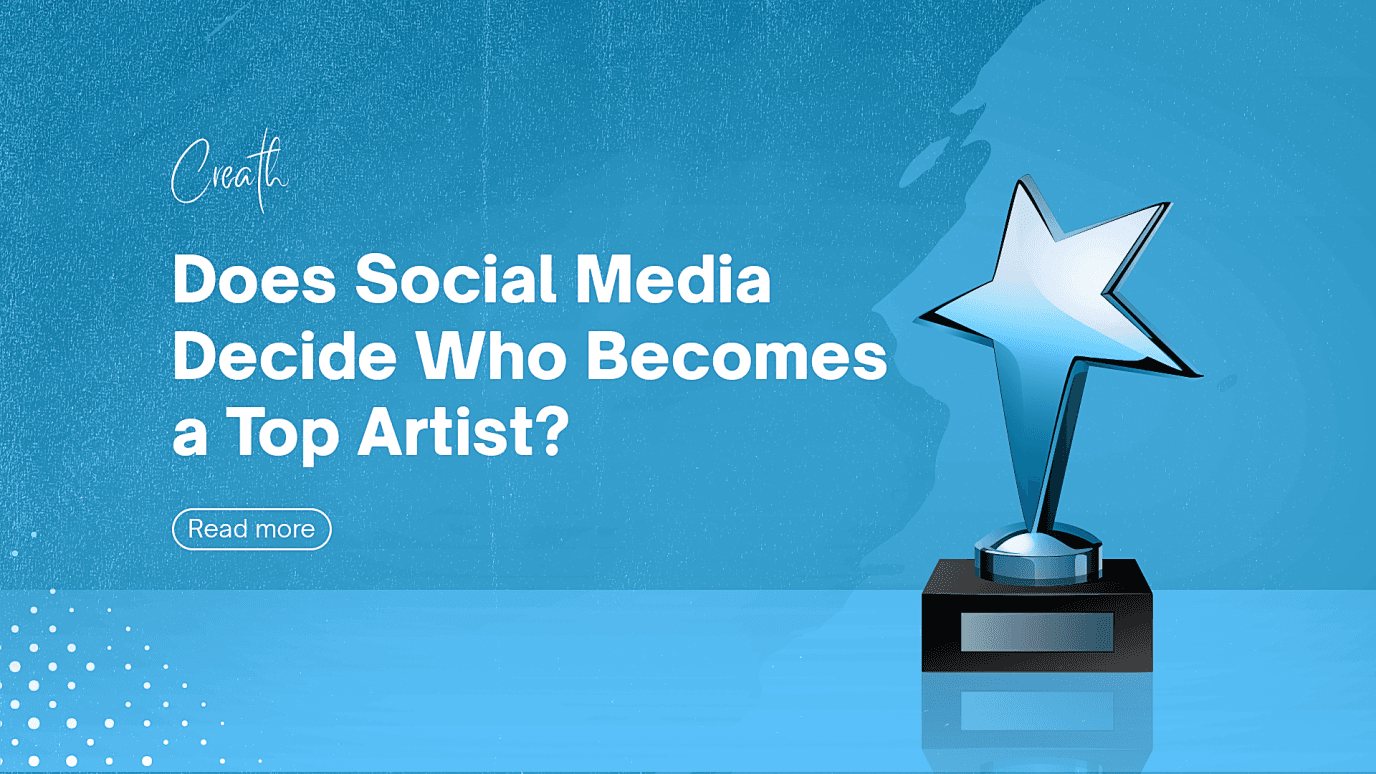
A talented artist spends hours in their studio, creating work that could stand alongside the greats. But outside those walls, no one knows they exist.
Meanwhile, another artist—maybe less experienced, still figuring things out—posts regularly on Instagram, connects with collectors on X, and lands a feature on an influencer’s page. Within days, their pieces are sold out.
This isn’t just a theory. It’s how the art world works today.
Not long ago, an artist’s rise depended on gallery representation, collector interest, and curatorial validation. But social media has rewritten the rules. Now, an artist can build a career without ever stepping foot in a gallery—if they understand how to work the algorithm.
In our focus group with Nigerian curators, the sentiment was clear: social media is no longer optional. Many curators admitted they discover artists online before they ever meet them in person. Some even admitted that a strong social presence makes an artist more appealing for exhibitions.
But here’s where it gets tricky.
Not every artist is built for social media. Some just want to focus on their work instead of worrying about algorithms and engagement. Others don’t have the time, resources, or marketing skills to stand out online.
And let’s be honest—social media rewards trends, not always depth**.** An artist creating intricate, thought-provoking work might go unnoticed, while someone making quick, viral-friendly pieces gets all the attention.
Even pricing is affected. One curator pointed out that artists with large followings can command higher prices, regardless of their technical skills. Meanwhile, incredibly talented artists with little online presence struggle to sell.
So, does that mean social media is deciding who succeeds? And if so, is that good for our industry?
There’s no denying that social media has opened doors for artists who once had no way to reach galleries or collectors. With Instagram, X, and even TikTok, Nigerian artists can reach a global audience on their own terms, without relying on traditional gatekeepers.
But is visibility the same as value?
If curators, collectors, and galleries rely too heavily on social media to determine who is "important," does that mean art is now a popularity contest? Are we prioritizing engagement over excellence?
Or is this simply the new reality—where being a successful artist requires just as much skill in branding as in brushstrokes?
Social media has changed the game, but should it be the game?
If an artist isn’t big online, does that make their work any less important? Should curators and collectors look beyond the algorithm?
What do you think?
March 24, 2025
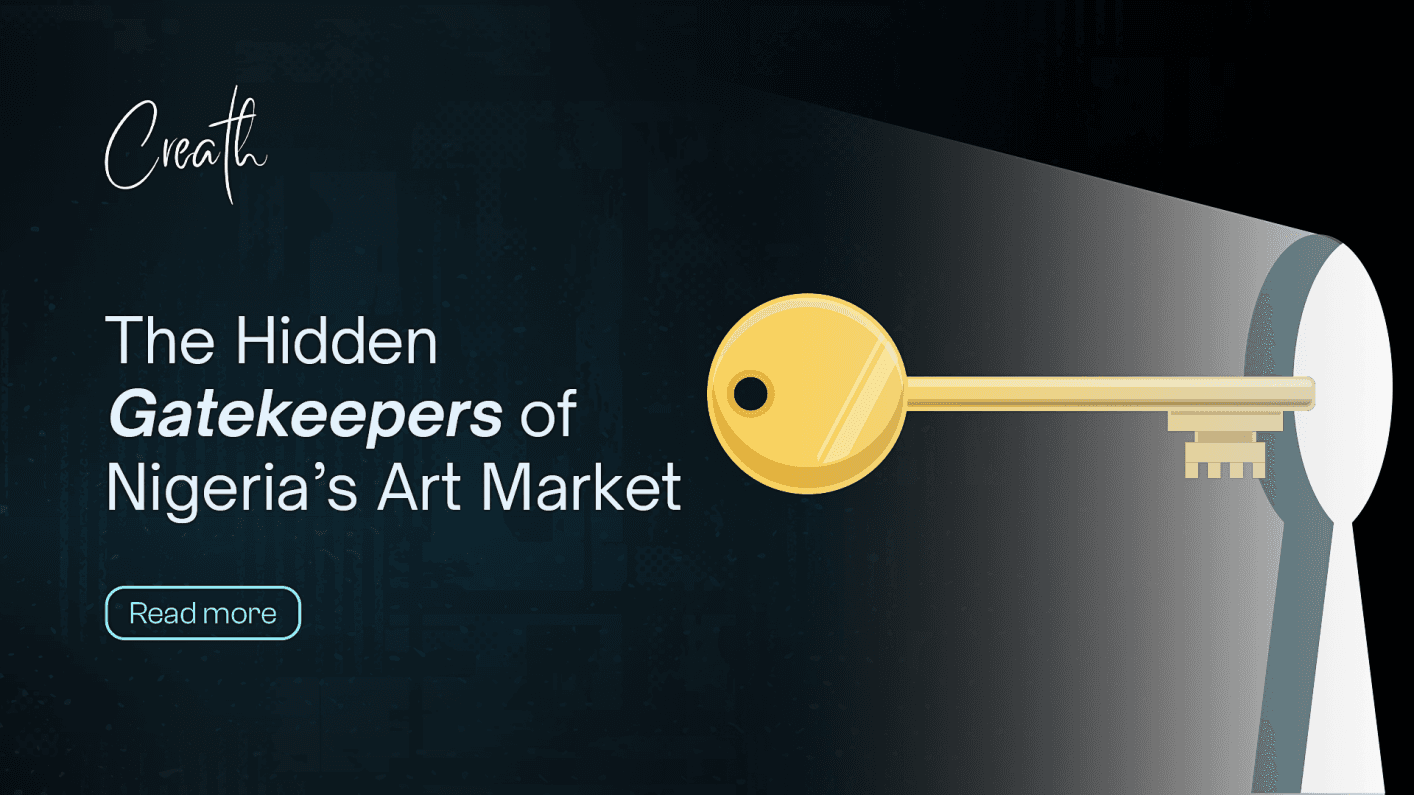
In Nigeria’s art space, one thing is certain—no one talks about collectors.
You’ll hear about the artist, the curator, the gallery, the exhibition. But when it comes to who’s actually buying the art? Silence. No names, no details, just vague phrases like “a private collector acquired this piece” or “a serious buyer has shown interest.”
It’s an open secret. Curators protect their collector lists like classified intelligence. Galleries close deals behind shut doors. Even artists, the ones actually creating the work, often don’t know who owns their pieces after a sale.
But the question is: Is this secrecy helping or hurting the Nigerian art space?
There are understandable reasons for privacy. Many collectors—especially high-net-worth individuals—aren’t looking for attention. They see art as a passion, an investment, or even a wealth storage method, and they prefer to operate discreetly.
Some worry about security. In a country where wealth can attract the wrong kind of interest, keeping a low profile is a smart move. Others fear being hounded by artists, curators, and dealers once their buying power becomes public knowledge.
And then there’s the power dynamic. In an industry where access is everything, controlling who knows who means controlling opportunities. Keeping collector information exclusive allows certain stakeholders—dealers, curators, gallery owners—to maintain leverage.
But at what cost?
The Nigerian art market appears to be expanding, but without clear data, it’s hard to say for sure. What’s certain, though, is that without more transparency, it risks becoming an insider’s game—where only a small, connected group truly benefits.
When collectors stay hidden, it’s not just artists who lose—it’s the whole market. New artists struggle to find buyers or even understand what kind of work sells. Pricing becomes unpredictable, based more on connections than real demand, making it hard to know what’s fair. Even collectors miss out—if they love a particular style but remain private, the artists creating that work may never know to reach them.
And let’s be real—secrecy creates room for exploitation. Stories circulate of artists unknowingly selling works far below market value because they didn’t realize how much demand there was. Others watch their art change hands at auctions for exponentially higher prices while they see none of that upside.
Some global markets are already shifting. Internationally, platforms like Artsy and Sotheby’s are bringing digital transparency to art sales, listing collectors and price histories. At Creath, this is already built into how we operate. Every piece of art sold on our marketplace has a verifiable chain of ownership, meaning artists can track where their work goes, and collectors know exactly what they’re buying.
Nigeria’s art industry doesn’t need to expose every buyer, but maybe it’s time to rethink how much secrecy is necessary. What if we had clearer data on how many artworks are actually being sold? What if artists and curators could track demand and collector interest without breaching privacy? What if the market was built on trust instead of gatekeeping?
Because at the end of the day, an industry that thrives in the shadows will always remain smaller than it should be.
So, here’s the real question: Is protecting collector privacy holding the Nigerian art scene back? What do you think?
March 12, 2025
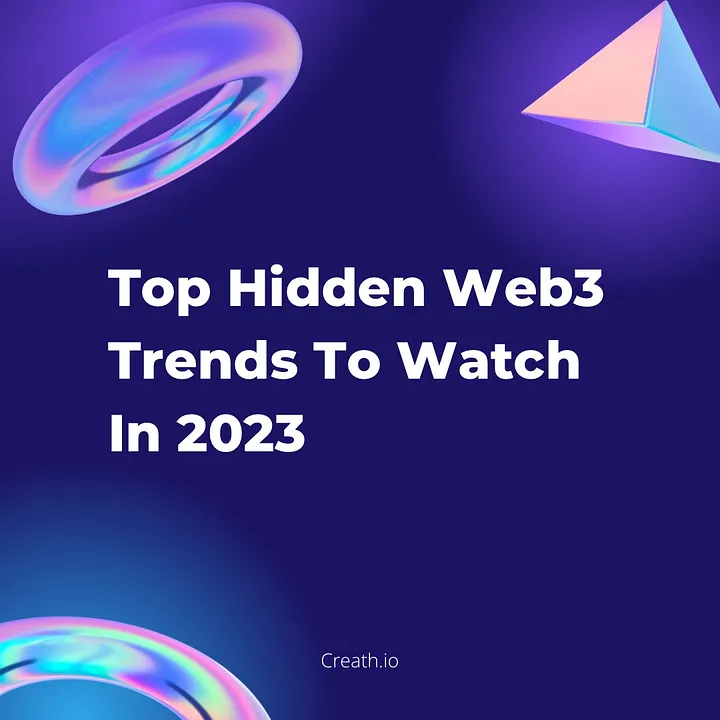
The world of Web3 is rapidly evolving, and gathering significant popularity across several parts of the world. This increasing interest is evident in the high number of Web-3-related searches in recent years.
So individuals and businesses need to stay informed about the latest trends to stay ahead of the curve. In this article, we will explore some of the hidden trends that experts believe will shape the future of Web3 in 2023.
Decentralized Finance (DeFi) is one of the most significant trends in the Web3 space in recent years, and it is expected to continue to grow in popularity in 2023. DeFi platforms allow users to access financial services such as lending, borrowing, and trading without the use of centralized intermediaries. While investment in DeFi and crypto gives you the opportunity to make large profits, it also comes with some typical risks.
By using blockchain technology, DeFi platforms can provide these services in a secure, trustless, and decentralized manner. This has the potential to democratize access to financial services, giving more people access to these services, and disrupting traditional financial institutions. Now with many businesses and investors interested in DeFi, we are likely going to experience more liquidity flow in 2023.
Thanks to DeFi insurance, investors can secure and protect their acquired assets from hacks or scams. This is a trend that will definitely become more popular throughout the year and beyond.
Non-Fungible Tokens (NFTs) have been gaining traction in recent years, and they are expected to become even more popular in 2023. NFTs are unique digital assets that can represent anything from art and collectibles to virtual real estate. They are stored on a blockchain, making them resistant to and allowing for true ownership and provenance.
This allows for a new level of digital ownership and has the potential to open up new opportunities for businesses and individuals. Also, several NFT trading platforms are now working on the development of mechanisms that will promote the smooth exchange of NFTs. The creation of these liquidity tools will provide faster NFT trades and stabilise the market.
As more people and businesses adopt Web3 technologies, scalability will become increasingly important. Solutions such as sharding, sidechains, and layer 2 protocols aim to increase the number of transactions processed via a blockchain, reducing congestion and increasing speed. This is important because it will make it possible to scale these technologies to meet the increasing demand.
Privacy and security are always a concern in the digital world, and this is mostly true in the Web3 space. In 2023, we can expect to see an increased focus on privacy-enhancing technologies such as zero-knowledge proofs and homomorphic encryption, as well as new security solutions to protect against hacking and other malicious actors.
These solutions will help to ensure that users’ personal information and assets are protected and that the integrity of these platforms is maintained.
In recent years, the decentralized finance (DeFi) market has seen explosive growth, with the overall worth stored in DeFi protocols rising from just $1 billion in 2019 to over $20 billion in 2021. As the market continues to mature, we are seeing a trend of market consolidation in the DeFi space.
Market consolidation refers to the process of smaller players in a market being absorbed by larger players. In the DeFi space, this has mainly taken the form of mergers and acquisitions (M&A) activity. This trend is driven by a number of factors, including the need for increased liquidity, the desire for economies of scale, and the need for increased regulatory compliance.
One of the main drivers of market consolidation in the DeFi space is the need for increased liquidity. Decentralized exchanges (DEXs) and other DeFi protocols rely on liquidity pools to function. As the DeFi market grows, so too does the demand for liquidity. By merging with or acquiring other protocols, larger players can increase their liquidity pools and offer a better user experience to their customers.
Interoperability has been a significant challenge in the Web3 space, as different blockchain networks are not always compatible with one another. In 2023, we can expect to see more progress in this area, with new solutions such as cross-chain bridges and atomic swaps allowing several networks to communicate and interact with one another. This will be important to ensure that these different platforms can work together seamlessly and that users can access the services they need.
In conclusion, the world of Web3 continues to experience significant growth, and many new trends are shaping the future of this technology. By keeping an eye on these developments, businesses and individuals can stay ahead of the curve and take advantage of the new opportunities that Web3 technologies will bring. This includes the emergence of DeFi, NFTs, scalability solutions, privacy and security, and interoperability. With these trends, Web3 is becoming more and more mainstream and it is accessible to everyone.
September 3, 2024
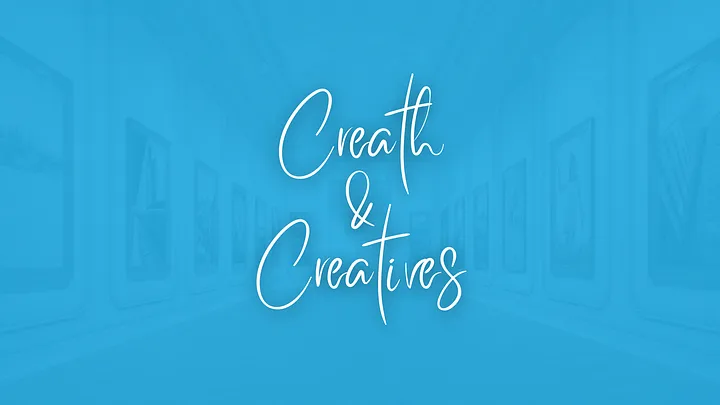
The art world has always been a realm of boundless creativity and self-expression. As technology continues to advance, it opens up exciting possibilities for artists and collectors alike. Today, we embark on a journey into the future of the art marketplace, a space that is revolutionizing the way artists showcase their work and collectors discover extraordinary pieces. Brace yourself for a glimpse into the vibrant world of tomorrow, where innovation and imagination converge.
Gone are the days when art was confined to exclusive galleries and limited to a select few. The art marketplace of tomorrow is breaking down barriers, making art accessible to all. Thanks to digital platforms, artists from around the globe can share their creations with a global audience, transcending geographical limitations. Collectors, too, can explore a vast array of artistic styles and genres, discovering new talents that might have remained hidden otherwise.
In the age of algorithms and data-driven recommendations, the art marketplace of tomorrow is embracing personalized curation. With sophisticated technologies, platforms can understand the preferences and tastes of collectors, offering tailored recommendations that resonate with their individual aesthetic sensibilities. This curated experience enhances the joy of discovery, enabling collectors to unearth hidden gems and forge deeper connections with the art they love.
The art marketplace of tomorrow serves as a powerful catalyst for artistic growth. By providing a global stage for artists to showcase their work, it unlocks countless opportunities for exposure, recognition, and collaboration. Artists can connect with fellow creatives, receive valuable feedback from art enthusiasts, and explore new avenues for professional development. This empowering environment nurtures creativity, fuels inspiration, and propels artists toward fulfilling their artistic visions.
One of the longstanding challenges in the art world has been ensuring the authenticity and provenance of artworks. However, the art marketplace of tomorrow leverages cutting-edge technologies to address this concern. Blockchain, for instance, provides an immutable ledger that traces an artwork’s history, from its creation to its current ownership. This revolutionary solution instills trust and transparency, safeguarding the art world against counterfeits and fraudulent practices.
Art is a constantly evolving expression of human imagination, and the art marketplace of tomorrow embraces this diversity. It extends beyond traditional paintings and sculptures to encompass a myriad of art forms, including digital art, installations, performance art, and more. This expansion broadens the horizons of both artists and collectors, allowing for greater experimentation, innovation, and appreciation of various mediums.
Art has always thrived in a supportive community, and tomorrow’s art marketplace fosters these connections globally. Artists can connect with like-minded individuals, share ideas, collaborate on projects, and participate in virtual exhibitions. This vibrant community fuels inspiration, offers valuable networking opportunities, and creates a sense of belonging among artists, collectors, and art enthusiasts.
We believe in the power of learning from the masters of the craft. The Creath & Creatives Podcast brings you interviews and conversations with legendary artists and visionaries who have made a significant impact in their respective fields. By watching and listening to these iconic figures, you’ll gain valuable insights, wisdom, and inspiration that can help shape your own artistic journey.
Uncover the Creative Process:
Legendary artists often have a unique approach to their craft, and through our podcast, you’ll have the opportunity to witness their creative process firsthand. Discover the techniques, methods, and mindset they employ to bring their artistic visions to life. By observing their process, you can gain new perspectives and refine your own creative techniques, ultimately enhancing your artistic expression.
Learn from Life Lessons:
Beyond the artistic realm, legendary artists have valuable life lessons to share. From overcoming challenges and persevering in the face of adversity to finding inspiration in everyday moments, their stories offer a wealth of wisdom and guidance. Through our YouTube podcast, you’ll have the chance to learn from their experiences, drawing upon their insights to navigate your own artistic and personal journey.
Tap into Inspiration:
Legendary artists have a knack for igniting inspiration within others. Their passion, dedication, and commitment to their craft can be a powerful catalyst for your artistic aspirations. By watching and listening to these iconic figures, you’ll immerse yourself in a world of creative energy, sparking new ideas and pushing the boundaries of your artistic potential.
As we peer into the art marketplace of tomorrow, we witness a dynamic and transformative space that celebrates creativity, accessibility, personalization, and innovation. It empowers artists to reach new heights, connects collectors with extraordinary works, and fosters a sense of community that transcends boundaries. Let us embrace this brave new world of artistic possibilities, where imagination knows no bounds and the art of tomorrow unfolds before our eyes. Join our community and embark on a journey of discovery, growth, and artistic excellence as we bring the world of legendary artists directly to your screen.
September 3, 2024
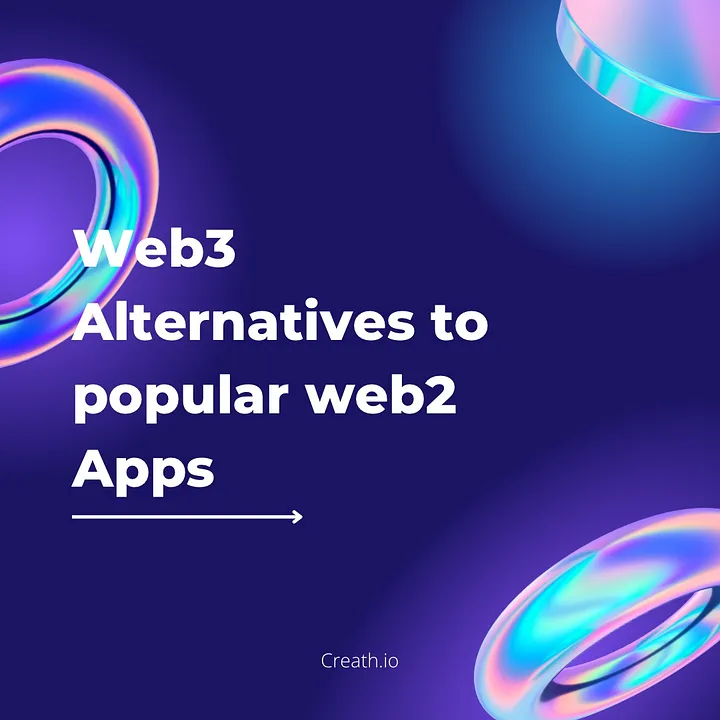
Over the last few months, web3 development has improved tremendously outside NFTs and cryptocurrency. While most people still use Web 2.0, Web3 is available and ready for use. This shows that the future is indeed now and closer than you think.
If you’d like to have a go at what the future holds, here are some Web3 alternatives to the popular Web 2.0 apps you can try.
The web3 email app allows you to send and receive emails using your wallet, providing a simple, private, secure, and decentralized way to manage your correspondence. Other Web3 email apps you can try include Ledgermail, Tildamail, Ethermail, Dmail and Metamail.
Why google when you can Presearch and get rewarded? Presearch uses blockchain technology to enable private searches and provide improved results while rewarding users with PRE tokens. Other Web 3 search engine apps include HUMBL, PEARL-B3.0 and search.n.xyz.
With Status, you can experience the convenience of having a messaging app, crypto wallets and Web3 browser all integrated into a single application, ensuring security and decentralization. Another alternative you can explore is Openchat, a Web 3 messaging app that allows you to chat and send tokens.
Stay connected with loved ones and the global community while earning rewards through the Outgrid app. You can also send cryptocurrency and display your NFTs on its secure and decentralized network. Other apps Web3 social network apps include Lenster, Steemit, Microblogging with a soul, Dtube, DSCVR, Join Circle, and AKASHA Reloaded
Join the district social platform and connect with professionals globally on a safe, confidential, and decentralized professional networking app. Other web3 professional network apps you can explore include Kleoverse, Entre and Meritverse.
Publish and control your content with Mirror, a decentralized web3 platform for limitless online writing. Also, you can embed NFTs and create web3 blocks for a unique publishing experience.
Find the perfect match on Matchpool, a decentralized web3 dating app that rewards you for successful connections while ensuring security. Other Web3 dating apps you can try include TruYou, Teleport; a web3 dating game, Fame, Datingverse, ORB and Welcome to Diamond.
Find your ideal remote job on Ethlance, a web3 platform for various remote job opportunities, including freelance, full-time, part-time, overseas and government positions. Other web3 apps for remote work are Decentralized freelancing, Freelancers for cryptocurrencies and Heymate.
Collect NFTs and earn rewards while listening to your favourite music on Emanate. Also, earn by creating and sharing your music on its decentralized platform. Other web3 music apps you can try include OPUS, Audius, Glass, and Royal.
Storj allows you to secure your files on its private, safe, decentralized platform. Also, its blazing performance allows you to recover your files anywhere and anytime. Other file storage apps you can use include Filecoin, Sia, Datum and Arweave
Experience a secure, fast, and private browsing experience with Brave. Block trackers, browse anonymously and avoid unwanted ads. Other web3 browser apps you can use are Puma, Opera Crypto Browser and Beaker.
Watch uninterrupted live streams and videos on THETA, a private, safe, decentralized video streaming platform. Other web3 apps you can stream with Livepeer, Odysee, Lenstube and Beem.
Need a domain name? Use Handshake, a peer-to-peer root naming app that offers unique domain names. Other web Domain name apps you can use include Unstoppable Domains and ENS domains.
Execute accounting tasks easily with Gilded, a decentralized app that offers a reliable and consistent financial management platform. Another option is Tactic, a web3 platform that provides traditional accounting software to track financial activity.
Advertise better and more efficiently with the web3 advertising app, Permission.io. You can also earn crypto rewards when you connect with consumers and brands alike.
Easily create web3 projects without coding experience using no-code web3 development apps like Directual, Simba, Web3 and SDKs. These platforms provide simple and user-friendly interfaces to help you quickly build and deploy decentralized applications on the blockchain.
Explore the secure, safe and decentralized network of Web3 apps as an alternative to traditional Web2.0 apps for various tasks and entertainment. Though some may be experimental, the experience is worth it. Prepare your wallet and join the future of technology.
September 3, 2024
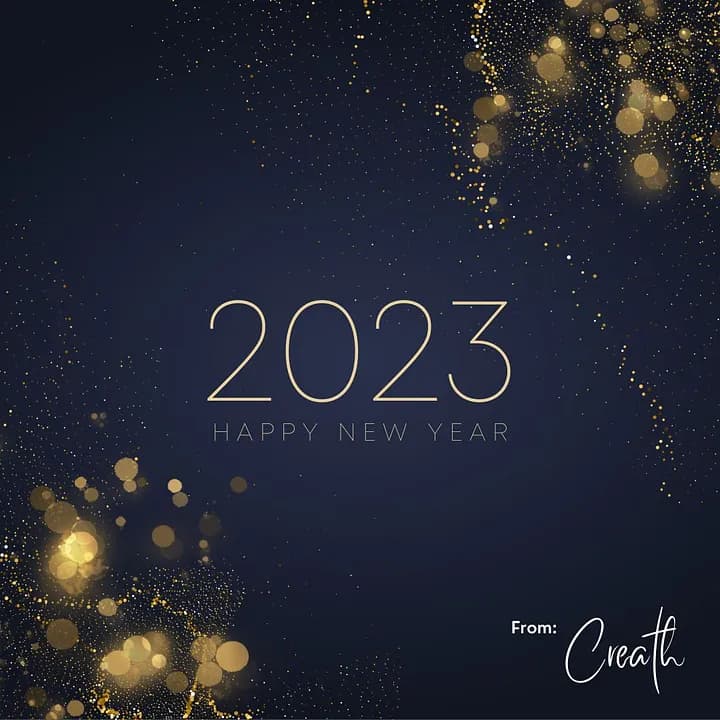
Wow, what a year it has been! We want to take a moment to reflect on everything we’ve accomplished over the past year and celebrate how far we’ve come despite the many turbulent situations 2022 has thrown at us before we bid farewell to yet another difficult year.
In collaboration with Kokopelli Art Gallery in Lagos, we hosted the first QR Art exhibition in Nigeria. A total of 10 Artists including digital artists, traditional artists, photographers, and sculptors, and their works were exhibited at the Kokopelli Gallery in Lekki-Lagos. This was a 3-day event, which had only QR codes framed and placed on display at the gallery. No artwork was on the physical display, as collectors and guests had to scan with their mobile devices to view the artwork.
Here we built brand activation and engagement for our yet-to-be-launched NFT art collection; The BucketBoy NFT. We hosted a 30-minute panel session discussing “How NFTs Are Impacting The Comic And Art Collecting World,” we also encouraged participation in our raffle draw for a chance to win exclusive prizes such as hoodies and Bucket hats.
We’ve promoted the marketplace on several platforms including discord and have been able to grow a community of artists, investors, and collectors.
We partnered with Hectragan, a digital artist to work on an NFT collection, BucketBoy NFT. The artists produced several art pieces ready for launch on Opensea. We’ve also worked on a website for BucketBoyNFT as we plan to build a brand from this.
The Two brothers and one Lumbo QR code group Exhibition was live on the Spatial Metaverse, all 30 art pieces featuring 10 contemporary Artists and Storytellers were on display at the virtual gallery.
The Creath team hosted its first End of the year party to celebrate with Artists, investors, and collectors who have been part of our success this year. watch here!
2022 was a great year for us and 2023 will even be better. Our team is working effortlessly to ensure that our milestones for this year are met, and Creath is closer to achieving its goals. Join our community and follow our social media accounts closely for regular news and updates. Have a great year!
September 3, 2024
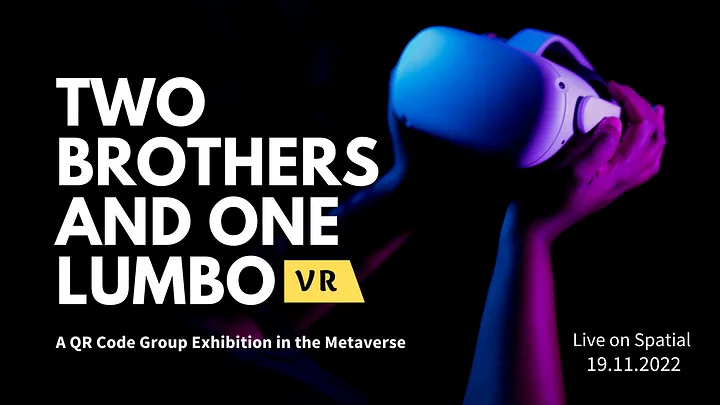
Art is loved by many individuals all over the world. People who appreciate art often visit many exhibition galleries to view various notable works. Nowadays, with technological advancements, almost anything can be done virtually. The same thing can be said for art exhibitions.
Recently, the world was introduced to Non-Fungible Tokens (NFTs) and the metaverse. The metaverse is a virtual space that anyone with an internet connection can access. It is often described as a space where reality and the virtual world interact. NFTs and avatars represent people and objects in the metaverse.
Various works of art can be showcased on the metaverse using NFTs, and art exhibitions can be held there. With this convenient technological advancement, art lovers around the world can attend art exhibitions virtually without needing to leave the convenience of their homes.
The metaverse is a digital location where you can do basically anything you want to do. Regular real-life activities like buying homes, cars, and artworks or visiting the museum are all possible in the metaverse. It’s like having a second life apart from reality. The metaverse is a really convenient tool.
Human beings are often limited by reality and can’t perform many of the activities we wish to do or engage with other cultures. The metaverse offers an environment that allows easy interaction with various cultures and activities limited by reality. For example, you can easily attend art shows usually hosted far away using the metaverse.
The metaverse makes it very easy for artists to showcase their work easily and helps conserve their art. Artists don’t have to worry about theft or damage to their art when using the metaverse. This makes having art exhibitions in the metaverse more advantageous than regular art shows in reality.
Another thing that makes the metaverse stand out is the ease of payment. It is easy to conduct monetary transactions in the metaverse. Individuals can easily link their crypto wallets to the metaverse if they want to execute any trade. The wallet can be used to pay for anything, including homes and art.
There are multiple metaverse platforms with different requirements. Some metaverse platforms require you to have a metamask, while some do not. Some also require the user to have a crypto wallet before they are granted access to the digital world.
Many metaverse platforms can be used to hold art exhibitions. The most commonly known metaverse is Decentraland. However, the most well-known metaverse when it comes to the art scene is Spatial. There have been many successful art exhibitions conducted on Spatial.
The Spatial metaverse offers multiple scenarios where art enthusiasts can engage each other in a perfect environment. It is very user-friendly, and guests and exhibitors can easily participate in art displays without encountering difficulties. Art communities can also be created in the metaverse with healthy environments.
The metaverse can easily be accessed from any device with an internet connection. Each space in the metaverse can take around fifty people. However, it is possible to connect several of these spaces to form one extensive network. Art exhibitions can be held in these connected spaces.
To participate in an art exhibition in the metaverse, you only require a metaverse account and an avatar. Your avatar represents you in the metaverse, and you can have access to events using your avatar. How can you create or join an art exhibition in the metaverse?
Here are the steps to follow to create or host an art exhibition in the metaverse.
How can you attend an art exhibition in the metaverse as a guest? Here are the steps to follow.
Art exhibitions using the metaverse are becoming a major trend in society today. With the provided steps, hosting or attending an art exhibition in the metaverse is easy.
Not all metaverse platforms require you to have a wallet before you can use them. Some metaverse platforms can allow you to participate as a guest. Still, if you want to pay for anything that catches your eye, you must have a crypto wallet. This allows for a better interactive experience.
The NFTs displayed by the exhibition host can be bought with money from your crypto wallet. Having one is not compulsory, but that limits the person to viewing alone. They won’t be able to make any purchases in the metaverse. Hence, having a crypto wallet connected to your metaverse account is better.
Art exhibitions in the metaverse are becoming more and more frequent. It is perfectly normal to say art exhibitions have a future in the metaverse. Artists are becoming more adept at exhibiting their works on the metaverse daily. Many art events have been held in the metaverse. What can you expect from an art exhibition in the metaverse?
Art exhibitions in the metaverse differ from those in real life. The metaverse offers a new and creative way for artists to showcase their pieces digitally. The spaces where the art pieces are displayed are often made into works of art themselves by digital artists.
In the metaverse, the artist fully controls how he wants everything to look. This allows artists to express themselves more easily. Going to an art exhibition on the metaverse can seem like a fun game experience. It all depends on what the artist wants to showcase to the audience.
Many well-known artists have held exhibitions in the metaverse showing their various artworks. When you attend an art exhibition in the metaverse, you get to admire the NFTs presented in an artist’s unique way. In an age where technology is part of everyday life, art exhibitions in the metaverse are fast becoming a norm.
Technology is rapidly advancing, and the metaverse is being used all over the world. Many events and shows are now held in the metaverse. The digital world makes it easy for artists and guests to interact with each other from anywhere in the world.
Many art exhibitions have been held in the metaverse showcasing exquisite NFTs. Users can also make purchases easily in the metaverse by linking to their online wallet. The digital world provided in the metaverse allows artists to display their full potential in a very user-friendly way. Every day, art exhibitions in the metaverse keep advancing further.
September 3, 2024
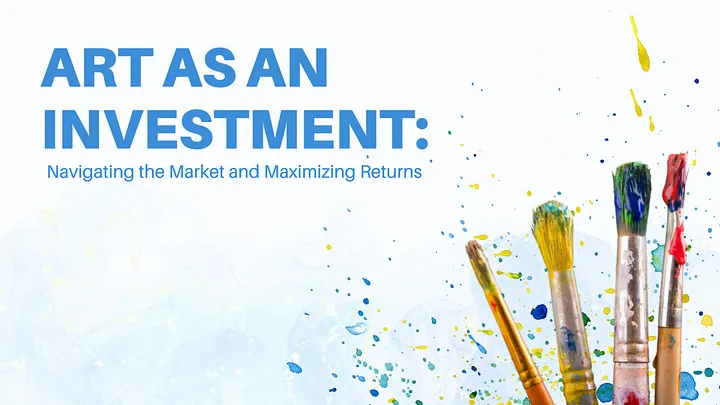
Art has long been appreciated for its aesthetic and cultural value. However, it has also emerged as a viable investment option in recent years. The art market has experienced significant growth, attracting both seasoned investors and newcomers seeking to diversify their portfolios. However, investing in art requires careful consideration and a strategic approach to maximize returns. In this article, we will explore the world of art as an investment, discuss critical factors to consider, and provide guidance on navigating the market effectively.
The first step in art investment is to understand the art market comprehensively. It is a complex and dynamic environment influenced by various factors, including artists’ reputations, art movements, historical significance, and market trends. Research and education play a vital role in making informed investment decisions.
Investing in art requires careful selection. It is essential to focus on artworks with strong investment potential. Factors to consider include the artist’s reputation, career trajectory, critical acclaim, and demand in the market. Emerging artists with potential for future growth can be attractive investment opportunities, while established artists with a proven track record often offer stability.
As with any investment portfolio, diversification is key. A diverse collection of art can help mitigate risks and maximize returns. Investing in different art mediums, styles, and artists from various periods ensures that your portfolio is not overly dependent on the success of a single artist or art movement.
Navigating the art market can be challenging, especially for newcomers. Seeking guidance from art experts, consultants, or galleries can provide valuable insights. These professionals have in-depth knowledge of the art market and trends and can offer advice on making sound investment choices. However, it is crucial to do your due diligence and choose advisors with a reputable track record.
Preserving the condition of artworks is crucial to maintaining their value. Proper storage, handling, and insurance are essential. Additionally, ensuring the authenticity of artworks is vital, as the market is susceptible to forgeries. Authenticating artworks through experts or reputable institutions adds credibility and value to your investment.
Investing in art requires a long-term perspective. While some artworks may experience immediate appreciation, others may take years or even decades to appreciate significantly. Patience and a willingness to hold onto artwork for an extended period are essential to maximize returns.
Keeping abreast of market trends and conducting thorough research is crucial. Monitoring auction results, gallery exhibitions, and art fairs can provide insights into emerging artists and upcoming art movements. Understanding the dynamics of the market and timing your investments strategically can contribute to maximizing returns.
Investing in art requires financial planning. Establishing a budget and factoring in costs such as acquisition fees, insurance, storage, and potential restoration expenses is essential. It is also crucial to consider liquidity, as art is not as easily liquidated as traditional investments. Selling artwork may involve additional costs such as commissions, auction fees, or taxes.
Art funds and investment vehicles can be viable options for individuals looking for a more indirect approach to art investment. Art funds pool investments from multiple individuals and invest in a portfolio of artworks. This approach allows for greater diversification and professional management of the investment.
Art as an investment can be a rewarding endeavor when approached with knowledge, research, and careful planning. Navigating the art market requires a combination of passion, expertise, and a long-term perspective. By understanding the market, selecting artworks wisely, seeking expert advice, and diversifying your portfolio, you can increase the chances of maximizing returns.
September 3, 2024
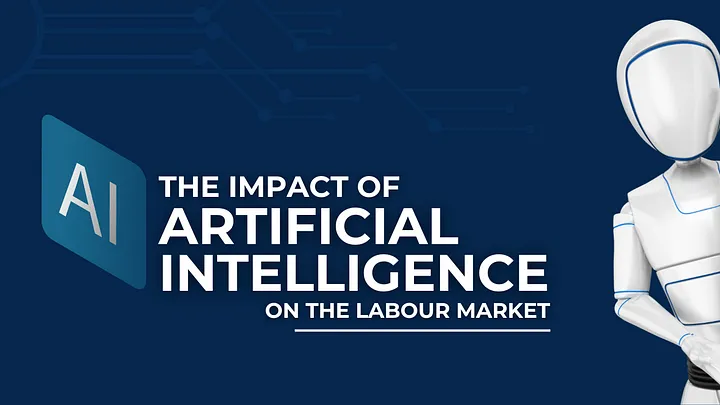
Artificial intelligence (AI) is a hot topic in the world of technology. It’s changing the way businesses operate and how people work, but it’s also raising concerns about job loss. In this article, we’ll explore what artificial intelligence can do for both employers and employees.
Artificial intelligence (AI) is the ability of machines to perform tasks that would normally require human intelligence to complete. It involves the development of algorithms and computer programs that can learn from data and experience, and make decisions and predictions based on that learning. AI can be used in a wide variety of applications, including image and speech recognition, natural language processing, robotics, and more. Some of the subfields of AI include machine learning, deep learning, neural networks, and computer vision. AI has the potential to revolutionize many industries, from healthcare and finance to transportation and manufacturing.
AI is a hot topic in the world of technology. It’s not just robots that can walk on their own, now we’re talking about computers that learn and make decisions on their own.
AI has been used to improve the performance of businesses and organizations, as well as individuals. The use of AI has grown exponentially over time. However, there are still many questions about how it impacts work environments and career paths for people who work with artificial intelligence (AI) technology.
AI can be used to improve the efficiency of businesses. For example, it’s possible to use AI to increase employee productivity and customer service.
A company that uses artificial intelligence will be able to:
AI can help businesses improve efficiency. As AI technologies become more advanced, they will be able to do certain tasks that were previously considered too complex or expensive for human involvement. For example, some companies are already using AI to automate reviews of resumes and job applicants’ past work history, so they don’t need as much time or money on hiring processes anymore.
AI can also help businesses save on hiring and training costs. All employers should consider this if they want their business to run smoothly; if not, then it might cause problems down the road!
While low-skilled professions are seriously threatened, AI will provide a place for an entirely novel category of jobs that can be learned through training. AI is expected to create more jobs than it kills off.
This is possible because, at the end of the day, human judgment and intervention are less likely to be surpassed by AI
According to a 2015 report by the McKinsey Global Institute, artificial intelligence (AI) could create 4 million additional jobs in the US alone by 2030. The research firm predicts that AI will boost productivity and efficiency, which means workers who are replaced by machines won’t be unemployed as they might have been before. Instead of being unemployed, they’ll be able to work at higher-paying jobs with better benefits and security — or maybe even start their own business!
The unemployment rate is expected to decline further. The unemployment rate is expected to decline from 4.1% to 3.9% in 2020, and then further still to 3.6%. This trend was observed after the Great Recession when unemployment dropped from 10% at its peak in 2009 to 4%.
AI is a tool that can be used to automate certain tasks. It’s been used for years, but it’s only recently become more sophisticated and accurate than human workers. AI has been so effective at automating tasks that many jobs will be replaced by automation or robotics soon.
For example, imagine if you were asked to do something like drive a car or collect trash from your apartment complex. You could easily do both things with an app on your phone! Even though we may not think about them much now — we have already gone far down this path with Google Maps and Amazon Alexa — you might not even need human labor anymore when it comes time for new updates (or older ones).
AI can help businesses improve efficiency, but everyone must have an opportunity to learn new skills.
If you’re a business owner and you don’t have time to train new employees, artificial intelligence could help your company save money, time, and energy. This technology could even save labor dollars — if your workers don’t have enough training on how to use their machines or equipment they’ll needlessly spend hours doing repetitive tasks that could be automated by AI instead.
In conclusion, artificial intelligence is already having a profound impact on the job market. As more and more jobs are automated, it will become harder for humans to compete. This will likely lead to higher unemployment and lower wages. But what if your skills are not up to par? There are still many opportunities for those who want to make themselves valuable again by learning how AI can improve their ability at work!
Section: You can start by researching which technologies exist today that might be helpful in your field. If none exist yet, then consider creating one yourself. The best way forward: start now!
September 3, 2024
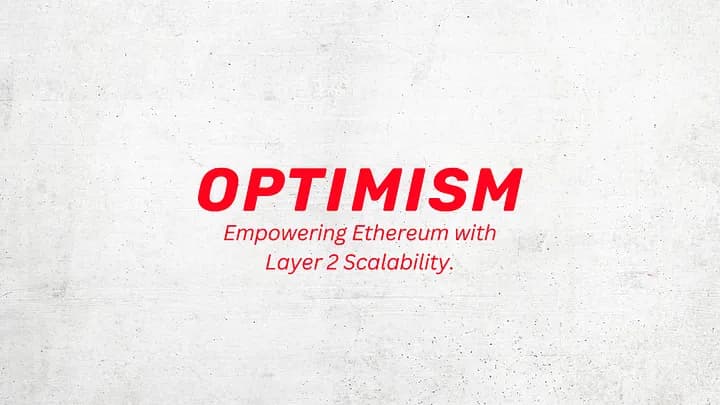
As the popularity of blockchain technology and decentralized applications (dApps) surges, the limitations of the Ethereum network become more apparent. High gas fees, slow transaction times, and limited scalability have become pressing concerns for the Ethereum community. In response to these challenges, Layer 2 solutions have emerged as a promising remedy to enhance the efficiency and scalability of the Ethereum blockchain. Among these solutions, “Optimism” stands out as one of the most anticipated and promising Layer 2 networks.
Before delving into Optimism, let’s grasp the concept of Layer 2 solutions. Ethereum’s main bottleneck lies in its consensus mechanism and the way it processes transactions. Layer 2 refers to secondary protocols or frameworks that work on top of the Ethereum mainnet, alleviating congestion and improving performance. These solutions enable off-chain processing of transactions, reducing the burden on the mainnet and subsequently enhancing scalability.
Optimism is a Layer 2 scaling solution that employs Optimistic Rollups, a technology created to address Ethereum’s scalability issues. The team behind Optimism aims to significantly increase the throughput of the Ethereum network, thereby reducing gas fees and improving transaction speeds without compromising security.
Optimistic Rollups use a combination of on-chain and off-chain processes to achieve scalability. It enables off-chain processing of transactions, minimizing the data that needs to be stored on the Ethereum mainnet while still ensuring the security and integrity of the network.
The process begins with users submitting transactions to an off-chain entity called the “Optimistic Rollup.” This entity processes and validates the transactions before generating a compressed summary of the processed data. This summary, also known as the “rollup,” is then submitted to the Ethereum mainnet.
One of the essential features of Optimistic Rollups is the inclusion of “fraud proofs.” These are mechanisms that ensure the validity of transactions and protect against malicious actors. In the event that an invalid transaction is submitted, anyone can submit a fraud-proof to challenge it. This triggers a dispute process on the Ethereum mainnet, leading to the invalid transaction being rolled back.
By including fraud proofs, Optimistic Rollups maintain the security guarantees of the Ethereum mainnet while benefitting from the scalability offered by off-chain processing.
Scalability: Optimism dramatically enhances the throughput of the Ethereum network, potentially processing thousands of transactions per second. This scalability boost reduces congestion and lowers gas fees, making the Ethereum ecosystem more accessible and cost-effective for users.
Seamless Integration: One of the significant advantages of Optimistic Rollups is its compatibility with existing Ethereum smart contracts. Developers can seamlessly port their dApps and projects to the Layer 2 network with minimal modifications.
User Experience: Faster transaction times and lower fees translate into a better user experience. Users can interact with dApps more efficiently and economically, making Ethereum-based applications more attractive and user-friendly.
Environmental Impact: By reducing gas fees and lowering the energy consumption of transactions, Optimism contributes to a greener and more sustainable blockchain ecosystem.
Optimism introduced the OP token on May 31st, providing an “airdrop” opportunity where 214 million OP tokens were available for free to 231,000 eligible addresses. This airdrop represents 5% of the total token supply, leaving the remaining 95% yet to be released.
The Token House, a part of the Optimism Collective with the Citizens’ House, is powered by the OP cryptocurrency. The Collective controls protocol updates, treasury distributions, and network settings.
In the upcoming fourth quarter of 2023, Creath has unveiled its strategy to initiate a launch on the Optimism (OP) Mainnet.
Optimism enhances network speed and transaction affordability by consolidating and sending multiple transactions as one to Ethereum’s Mainnet, reducing congestion and gas fees. Creath recognizes vast growth potential on OP Mainnet, aiming to optimize app efficiency and user access.
Creath aims to acquaint its community with OP token benefits. While Creath Art Marketplace currently operates on ERC-20 with USDC and fiat, the OP Mainnet shift enables OP token transactions and airdrops. Optimism has concluded two OP token airdrop rounds, with anticipation for a third.
Expect more on Creath’s Optimism move soon. Stay updated on goals via Creath’s social media.
September 3, 2024
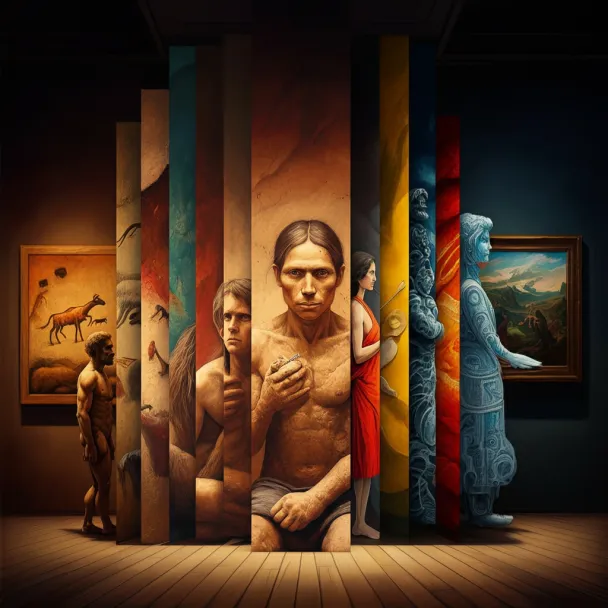
Have you ever stared at a piece of art and felt like you were transported into another dimension? That's exactly how I felt when I first saw Vincent van Gogh's "The Starry Night". The swirling blues and yellows seemed to come alive, pulling me into a world where the night sky danced and stars pulsed with energy. It was like stepping into the artist's mind, seeing the world through his eyes for just a moment.
That experience got me thinking: how did we get here? How did human creativity evolve from simple cave paintings to works that can practically leap off the canvas and into our souls? Join me on a journey through time as we explore the fascinating evolution of art.
Our story begins deep in the past, in dimly lit caves where our ancestors first put pigment to wall. Imagine being an early human, using charcoal and ochre to capture the animals you hunted, creating images that would last for tens of thousands of years. These weren't just pictures – they were a way to communicate, to share experiences, to make sense of the world.
As we step out of the caves and into the light of ancient civilizations, art takes on new roles. In Egypt, massive sculptures and intricate tomb paintings tell stories of gods and pharaohs. Greek artists carve marble into forms so lifelike you'd almost expect them to breathe. Art becomes a language, a way to share culture and beliefs across generations.
Wandering into the Middle Ages, we find ourselves in soaring cathedrals, where sunlight streams through stained glass windows, painting the floors with biblical stories. In a world where few could read, these were the picture books that taught people about their faith.
But change is coming. As we enter the Renaissance, it's like someone's adjusted the focus on a camera. Artists like Leonardo da Vinci and Michelangelo aren't just painters – they're scientists and innovators, constantly pushing the boundaries of what's possible in art. Standing in front of the Mona Lisa, you can almost feel the weight of her gaze.
The Industrial Revolution changed everything, including art. New materials and manufacturing techniques meant art could be mass-produced for the first time. Art was no longer just for the rich – it could be enjoyed by everyone.
In the 20th century, artists decided to shake things up. They broke away from traditional ideas about what art should look like. Famous artists like Jackson Pollock threw paint at canvases, creating abstract expressionist works that challenged the very definition of art.
With the rise of computers, artists found a whole new playground. Digital tools allowed for new forms of expression. Artists like Beeple (Mike Winkelmann) create mind-bending digital illustrations that blur the line between reality and fantasy. His collage "Everydays: The First 5000 Days" sold for a staggering $69 million, showing just how valuable digital art has become.
Now we're in the age of blockchain and NFTs (Non-Fungible Tokens), where digital artworks can be bought, sold, and owned just like physical paintings. Pak's artwork "The Merge" sold for $91.8 million, making it the most expensive artwork ever sold by a living artist – and it exists only as digital tokens.
As our journey comes to an end, we find ourselves back in the present, maybe standing in front of a piece like "The Starry Night" once again. But now, we see it with new eyes. We see the long thread of human creativity that stretches from those first cave paintings all the way to the digital art of today.
Art has been our constant companion throughout history, evolving alongside us, always finding new ways to express the human experience. So the next time you look at a piece of art, remember – you're not just seeing a painting or a sculpture. You're seeing a small part of our collective journey as human beings, a journey of creativity, innovation, and endless wonder.
What will the next step in that journey be? As technology continues to advance, who knows what amazing forms art will take? Whatever comes, one thing is certain – as long as there are humans, there will be art, in all its wonderful, weird, and beautiful forms.
September 3, 2024
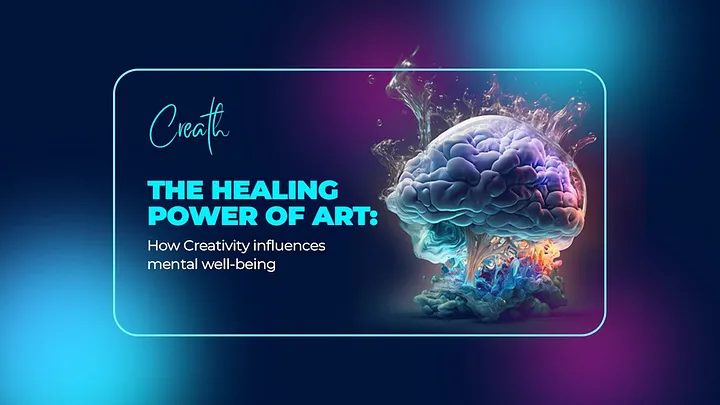
Toju Clarke’s words resonate deeply with anyone who has sought refuge in art as a means of self-expression. The act of creating art provides an avenue to externalize complex thoughts and emotions. Whether through painting, sculpture, music, or any other medium, art offers a safe and non-judgmental space for exploring and processing intricate feelings.
Art creation can be an inherently therapeutic experience. It empowers individuals to channel their emotions into a tangible form, offering a sense of control and emotional release. Engaging in art-making activates both the mind and body, reducing stress levels and promoting relaxation. It is no wonder that art therapy is a recognized tool in mental health treatment, aiding individuals in coping with conditions like anxiety, depression, and post-traumatic stress disorder (PTSD).
Toju Clarke’s statement also underscores how art acts as a reflective mirror to the artist’s inner world. Through their creations, artists reveal their emotional landscapes, inviting viewers to connect with the unfiltered sentiments embedded within the artwork. This connection can be profoundly moving, fostering empathy and understanding.
Toju Clarke’s commitment to advocating for mental health awareness through art is both commendable and impactful. Art has the potential to initiate essential conversations and dismantle the stigma surrounding mental health. By utilizing his creative talents as a platform, Toju Clarke reaches people on a profound emotional level, encouraging them to explore their own mental health journeys.
To delve deeper into the profound connection between art, creativity, and mental well-being, we invite you to watch the enlightening episode with Toju Clarke on our Creath and Creatives Podcast. Toju shares his personal experiences and insights into how art has been instrumental in his mental health journey. You can find the episode on our YouTube page here.
Art possesses a transformative power that extends far beyond aesthetics. It has the potential to heal, inspire, and bring about change in our lives. Toju Clarke’s dedication to using his art as a vehicle for mental health advocacy exemplifies this powerful connection. As we continue to explore the boundless potential of art, let us also acknowledge its role in fostering healing, understanding, and compassion. Whether you create art or appreciate it as an observer, remember that it holds the potential to positively impact mental well-being and drive positive change in the world.
September 3, 2024
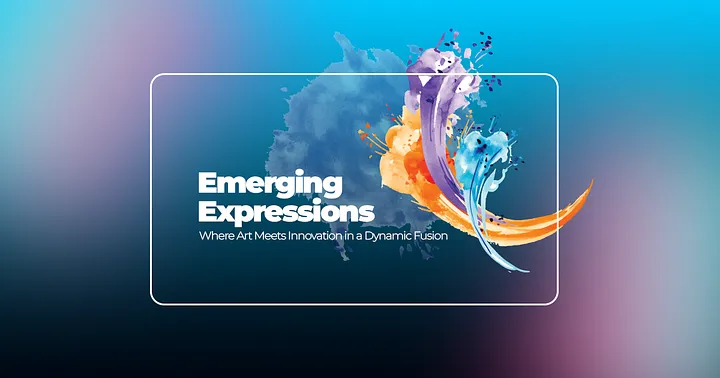
Imagine a realm where art isn’t just a canvas but a convergence of creativity and innovation. Introducing Emerging Expressions, a visionary art and tech festival curated by Creath that promises to be a beacon of creativity and collaboration. This unique festival combines a dynamic blockchain conference with a hybrid art exhibition, seamlessly merging the traditional with the modern to showcase the boundless potential of Nigeria’s emerging contemporary artists.
Emerging Expressions is not just an art exhibition; it’s a celebration of the artistic spirit intertwined with cutting-edge technology. At its core, this festival strives to showcase the exceptional talents of young Nigerian contemporary artists on a global stage. With meticulous curation, the event will feature a collection of 100 art pieces crafted by budding artists from universities across Nigeria. This juxtaposition of traditional and modern approaches aims to captivate art enthusiasts while spotlighting the creative essence of Nigeria’s emerging talents.
Taking a groundbreaking stride, Emerging Expressions integrates a Blockchain conference into its festival. This conference will serve as a platform for artists, industry professionals, and tech visionaries to exchange ideas, explore possibilities, and uncover ways in which blockchain can revolutionize the Nigerian art industry.
The Blockchain conference at Emerging Expressions brings together a diverse spectrum of individuals: artists, technologists, entrepreneurs, and investors. These minds will convene to delve into the latest advancements and innovations in the realm of blockchain technology. The conference explores the potential applications of blockchain in the art industry, from ownership authentication to transforming the art market landscape. As blockchain’s influence pervades various sectors, Emerging Expressions ensures that the art industry remains at the forefront of this transformative wave.
Over two electrifying days, Emerging Expressions anticipates drawing a crowd of over 3,000 art enthusiasts. Attendees will immerse themselves in an array of artistic styles and techniques, each piece reflecting unique perspectives and untamed creativity. But this isn’t confined to physical spaces alone. The artworks will transcend traditional confines by extending into the virtual realm through Virtual Reality (VR) on Spatial Metaverse. This revolutionary approach is projected to attract over 70,000 global guests within the inaugural year, exponentially amplifying the artists’ exposure.
The concept of ownership is reimagined as all artworks find a digital home as Non-Fungible Tokens (NFTs) on the Creath Art Marketplace. This innovation empowers art enthusiasts to own both the physical and digital renditions of the artwork. It’s a pioneering bridge between the tangible and the virtual, providing artists with a platform to extend their influence beyond the exhibition and collectors with a unique piece of artistic expression.
Emerging Expressions isn’t merely an event — it’s a vision. It’s about empowering young Nigerian artists, sparking cross-cultural exchanges, and offering an immersive artistic experience that resonates globally. It stands as a beacon of artistic growth and expression, fostering the creative spirit within Nigeria and beyond.
With activities that range from live art demonstrations, interactive installations, and engaging art talks to VR stations and musical performances, Emerging Expressions ensures an enchanting and interactive experience for all attendees. It’s a confluence of creativity, innovation, and cultural celebration.
As the world looks toward a future shaped by technology, Emerging Expressions stands as a testament to the fact that the artistic spirit will always thrive, evolve, and inspire.
Join us in celebrating artistic innovation and technological evolution at Emerging Expressions — an event that unites art, technology, and the limitless potential of human expression.
September 3, 2024
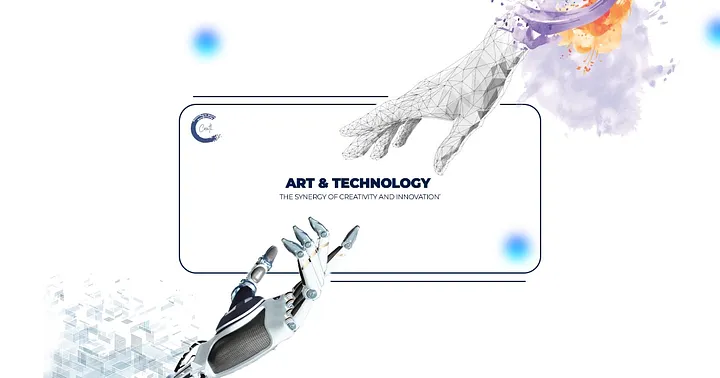
In the digital age, art and technology converge in a harmonious dance that promises to reshape the essence of creativity and innovation. This remarkable synergy between art and technology is not just a trend; it’s a profound shift that has the potential to redefine the boundaries of human expression and push the frontiers of innovation.
At Creath, we stand at the forefront of this exciting convergence, offering artists and art enthusiasts a unique platform where the worlds of art and technology harmoniously collide. In this article, we’ll explore the captivating journey of art and technology and how it is shaping the future of the art industry.
The traditional boundaries that once confined art to physical canvases, sculptures, and galleries have expanded exponentially with the infusion of technology. Today, artists wield a vast digital canvas upon which they can experiment, create, and communicate like never before.
Digital Art: Creath has embraced the world of digital art, offering artists the ability to create, sell, and own their digital creations securely and authentically. The use of blockchain technology ensures that each piece of art is verifiable, traceable, and unique. This not only empowers artists to receive fair compensation but also gives collectors the chance to engage with art on an entirely different level, truly exemplifying our commitment to ‘creativity and innovation.’
Virtual Reality (VR) and Augmented Reality (AR): VR and AR technologies have transcended gaming and entertainment, finding their way into the world of art. They enable artists to craft immersive, interactive experiences that transcend the boundaries of time and space. Through VR art galleries and AR installations, viewers can step inside the artist’s world and become active participants in the creative process.
Artificial Intelligence (AI) and Machine Learning: AI and machine learning have also found their place in the artist’s toolkit. These technologies act as creative collaborators, helping artists generate unique visuals, predict trends, and unlock new creative possibilities. From developing art to enhancing the creative process, AI is pushing the boundaries of artistic innovation.
The synergy of art and technology isn’t limited to solo endeavors. It’s a global phenomenon that fosters collaboration and inclusivity. Artists from diverse backgrounds, cultures, and corners of the world can now collaborate seamlessly, bringing together their unique perspectives and styles to create truly remarkable works of art.
Furthermore, technology democratizes art, making it accessible to a wider audience. Aspiring artists can now learn and create without the traditional barriers of cost and space. Online tutorials, digital tools, and open-source platforms enable anyone with a passion for art to embark on a creative journey.
Technology is not just altering the process of creating art; it’s redefining how we experience and interact with it.
Digital Museums and Galleries: Museums and galleries are embracing digital interfaces, offering visitors interactive exhibitions, guided tours, and immersive experiences. This not only enhances the viewer’s engagement but also opens up art to a global audience.
Blockchain and Art Provenance: The advent of blockchain technology ensures transparency and provenance in the art market. Every artwork’s history and authenticity are traceable, instilling trust and confidence in artists and collectors alike.
The exciting synergy of art and technology shows no signs of slowing down. As technology advances, so will the possibilities for artistic innovation. We can anticipate:
More Accessible Tools: As technology becomes more user-friendly, more people, regardless of their background or expertise, will have the opportunity to create and appreciate art.
New Art Forms: We’ll witness the emergence of entirely new art forms that we can’t even imagine today, driven by AI, virtual reality, and other cutting-edge technologies.
Global Collaboration: Artists from different corners of the world will collaborate seamlessly, exchanging ideas and pushing the boundaries of creative expression.
Enhanced Engagement: Interactive and immersive art experiences will become the norm, making art a more integral part of our daily lives.
In conclusion, the synergy of art and technology is ushering in a new era of creativity and innovation. It’s breaking down barriers, redefining the artistic experience, and offering boundless possibilities for artists and art enthusiasts alike. As we move forward, this fusion will continue to shape the future of the art world, enriching our lives with new forms of beauty and expression.
Creath invites you to explore the breathtaking synergy of art and technology on our platform. Witness how we are shaping the future of the art industry, offering artists and art enthusiasts a space where creativity and innovation know no bounds. Click here to visit our art marketplace to experience this remarkable journey firsthand and be a part of the revolution that is redefining art for generations to come. Embrace the future — embrace art and technology at Creath.
September 3, 2024
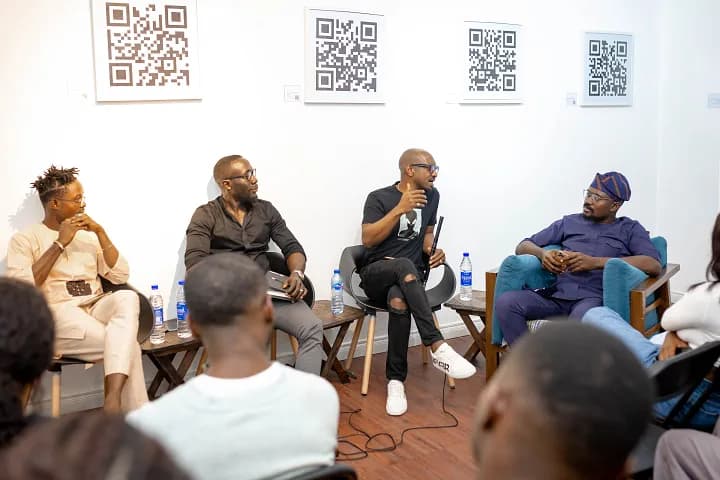
From the 5th to the 7th of August 2022, Creath, art curation firm and NFT marketplace, held an art exhibition in partnership with Kokopelli Gallery in Lagos. This exhibition was not like your regular exhibition; it had an interesting twist. What was this interesting twist? The art on exhibition was displayed as QR codes. So, to view each art, you had to scan the QR code with your mobile device. It was a special NFT meets physical art event.
The title of the exhibition was Two Brothers And One Lumbo, while the theme was the socio-political climate of Nigeria in the lead-up to general elections in 2023. The art used satire to portray the country’s condition at this critical time in contrast with many Nigerians’ hopes and aspirations for the coming election.
The exhibition had ten contemporary Nigerian artists display their works. The artworks consisted of paintings, photography, digital art, and sculpture.
The atmosphere was warm and welcoming, and the audience was impressed with what they saw. They viewed the art and exchanged ideas between themselves. It was a great time for art and discussions about the place of NFT Art in the Nigerian art scene. A talk segment was also held on the second day of the three-day exhibition and was well attended.
To purchase the artworks on display, collectors paid in USDC on Creath’s NFT marketplace. All purchases came with a physical copy of the artwork signed by the artist. Pictures from the exhibition can be found on Creath’s LinkedIn and Twitter pages.
Creath, the brains behind this one-of-a-kind exhibition, is into art curation and exhibition, blockchain and web development, and NFT minting and listing. They also run an NFT marketplace.
Creath marketplace is a place for artists to mint, list, and sell their NFT Art. Creath encourages artists to use various modes of expression to convey their message. USDC is the currency of transaction in the marketplace. Creath aims to link traditional art with digital art, which is why collectors will get the physical version of any art they purchase from the Creath marketplace. Creath promises an excellent user experience for artists and collectors.
The Creath Support and Advisory teams are always ready to guide you every step of the way, whether you are an artist or a collector. Reach out to them today if you have any questions or need assistance or clarification.
Creath is more than the marketplace. The aim is to build an international community of creatives and elite collectors. Aside from art curation/exhibition and blockchain/NFT development, Creath is your go-to place for brand awareness and marketing, market survey, art style, brand survey, community development and discord management, and on-chain voting implementation.
September 3, 2024
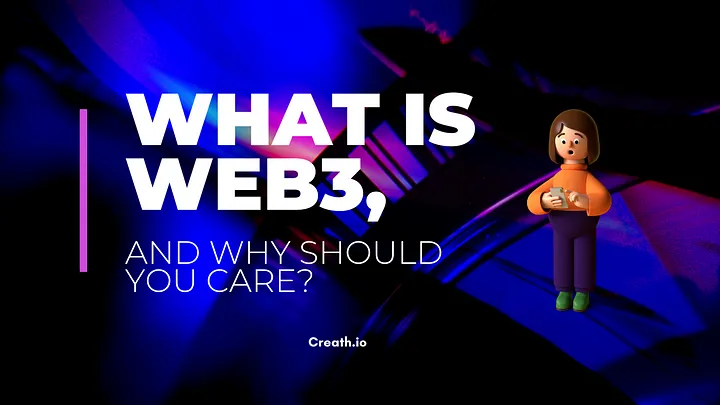
The global adoption of Web3 is on the rise, and knowing nothing about it can make you feel left out. However, there’s still a chance for you to enlighten yourself about Web3 — the Internet’s future.
Web3 is an idea for the evolution of the World Wide Web that includes decentralisation, blockchain technologies, and token-based economics. Hold on; We know you may not be following; Let us guide you better.
Web3 aims to build a decentralised internet on an open, permissionless blockchain network. Now, if you’re someone who’s not familiar with the tech space, it’ll be best to break down this definition into bits; let’s start with what blockchain means.
Blockchain, in simple terms, is a system in which a record of transactions made in bitcoin or another cryptocurrency is maintained across several computers linked in a peer-to-peer network. Blockchain makes system changes, hacking, and cheating difficult or impossible. A blockchain is essentially a digital ledger consisting of transactions duplicated and distributed across the entire network of computer systems on the blockchain.
Decentralisation refers to transferring control and decision-making from a centralised entity (individual, organisation, or group thereof) to a distributed network. Decentralisation is crucial in Web3 to provide services that users can access without difficulty.
Currently, the Internet is centralised; information travels through and is kept in data centres owned by a small number of companies. A few powerful players control the most widely used services and platforms.
Imagine an internet built, powered, and controlled by its users rather than a small number of influential tech firms, and people are rewarded “tokens” for their participation. The tokens may give holders voting power to make decisions and potentially accumulate real-world value.
Web3 will soon become the new norm. Instead of being restricted to a single web platform, people will soon be able to take their data and history of online interactions with them everywhere they go on the Internet. Social networks, transactions, and businesses based on blockchain have a considerable amount of potential for growth in the next few years.
Some current trends like cryptocurrency and non-fungible tokens (NFTs) will soon become part of our daily life. Some platforms already enable users to pay for things with cryptocurrencies — so imagine having to pay for a concert ticket in bitcoin and then probably receiving an NFT that confirms you’re the owner.
Imagine attending events in the metaverse, from conferences to parties to concerts. It all sounds bizarre, but these things are already taking place and will continue to do so even more in the near future, so why not get involved now?
You’re probably thinking,” This seems like a lot; how do I get involved? Where do I even start?”
The fact that you have read this article until this point is a great start.
Firstly, you need to equip yourself with knowledge, and you can do so in various ways; get involved by actually getting involved, following blockchain/crypto experts on social media, reading related newsletters, and enrolling in a course on Web3 development or blockchain technology.
All you have to do next is apply the knowledge you have gained. Remember to approach cautiously; it’s still a new space, beware of fraudsters.
Remember, Web3 is the internet of the future, and you’re early!
September 3, 2024

The digital world is constantly expanding, and several physical activities are digitizing. We have many artists still executing their works with traditional mediums in the art world. The increasing popularity of NFTs has shed more light on the potential of digitized artworks. For this reason, more traditional artists are converting their physical art to digital art.
Creath is a new-generation tech company that offers various Blockchain and Web3 services. One of our services is digitizing physical art. We help our artists convert their physical pieces into high-resolution copies that are just as attractive as the physical ones. These digital copies are minted into NFTs that can be listed on primary and secondary marketplaces.
External users who buy an NFT on the Creath marketplace can request a physical copy from us. The physical copies we provide will have the artist’s signature. The artists we partner with decide the listing price of their NFTs and the duration of auctions.
To promote our marketplace, Creath, in partnership with Kokopelli art gallery, is supporting a unique QR code exhibition called Two Brothers and One Lumbo. Creath marketplace will host the collections of artists in the event, and interested collectors will buy the NFTs directly on our platform.
Two Brothers and One Lumbo is a three-day event from August 5 to August 7. We’ve partnered with a total of ten artists for the exhibition, and we plan to partner with a lot more after the exhibition.
TWO BROTHERS AND ONE LUMBO brings together a selection of works that tackle the socio-political landscape of Nigeria thus generating a visual representation of the numerous opinions and questions presented at a critical period such as this in our country’s framework. It explores the use of satire as a literary device to concretise the mental picture of where we stand as a nation albeit the future expectations from the forthcoming elections.
It marries the display of art in a traditional gallery setting with the fast evolving technology of Art NFT and how it is displayed and interacted with as different methods of expression. This union is the crux of the exhibition. Which is why all the traditionally created NFTs being exhibited will come with the original physical versions when they’re collected.
This births the question of how Art and Technology can be used as effective tools of influencing social/political change in such an environment as Nigeria where technology and art are still mostly dealt the unimportant hand.
Thanks for your reading and support,
The Creath Team.
September 3, 2024
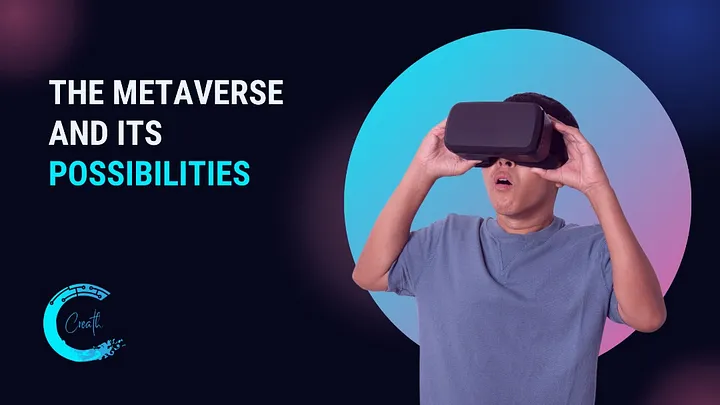
What is this term everyone in the tech space is going crazy about? Why did ‘Facebook’ have to rebrand itself to ‘Meta’? These are the questions that may have brought you here. Let’s help you understand.
The Metaverse is a vision of web3, which is the evolution of the internet. It is a digital environment built using blockchain technology and social media concepts to create a space for user interaction, much like the real world.
The Metaverse implies a progression of immersive digital experiences that users will have access to in the future, enabling them to carry out various diverse activities in entirely digital settings.
In this digital space, users can access avatars that let them live in the digital world. A metaverse may exist as a gaming planet; think Ready Player One; it may also exist as an NFT gallery, curated lands, or digital streets.
Countless opportunities exist in the Metaverse as they do in the real world. The Metaverse opens up an economy where wealth can be created. Using virtual reality and augmented reality (VR/AR) technologies, people can connect, communicate, or expand their businesses in an entirely new way.
As users can make their distinctive worlds or remodel the real ones, adorning them with digital art and populating it with digital creatures, the Metaverse will also open up intriguing new possibilities for leisure and creative expression.
New job opportunities will emerge based on various new technologies, and remote working will become better adapted to the space.
Blockchain technology will thrive in the Metaverse, and cryptocurrencies will become the principal means of financial transactions.
Creath Spatial Metaverse is a digital art gallery showcasing all art pieces curated and minted on Creath NFT Marketplace by some of our favorite artists. The gallery is also a hangout location for these artists and some art collectors, a platform to exchange ideas and experience the thrill of the Metaverse.
The link to this digital space will be published alongside our next medium article, so be on the lookout by following us and staying tuned to our channel.
September 3, 2024
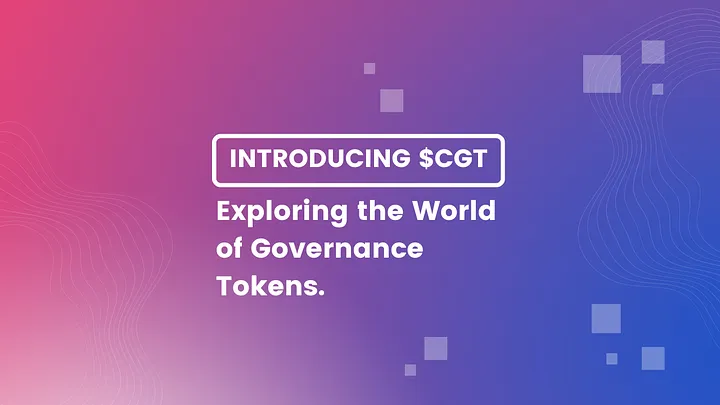
In recent years, the rise of blockchain technology has revolutionized various industries, with cryptocurrencies leading the way. Alongside the proliferation of digital currencies, a new concept has emerged that empowers token holders with the ability to shape the future of decentralized platforms and protocols: governance tokens. These tokens allow users to participate in decision-making processes, vote on proposals, and collectively steer the direction of a project. Among these tokens, one that stands out is $CGT, a governance token that is set to make a significant impact in the decentralized finance (DeFi) space.
Before diving into the details of $CGT, it is essential to grasp the fundamental concept of governance tokens. Governance tokens are blockchain-based assets that provide holders with voting rights, enabling them to influence key decisions regarding the protocol they are associated with. These decisions can range from protocol upgrades and changes to the allocation of funds and even the addition or removal of features.
Governance tokens bring forth the concept of decentralized governance, where power is distributed among the token holders rather than being centralized in the hands of a few individuals or entities. This democratized approach ensures that the community’s voice is heard and that decisions are made collectively, fostering transparency, inclusivity, and decentralization.
The Creath Governance Token is a utility token that facilitates transactions on the Creath Art Marketplace, enables platform governance, and empowers its participants. CGT holders play a beneficial role in the development of Creath by participating in investment opportunities from staking and in decision-making processes.
As a governance token, CGT provides holders with voting rights, enabling them to influence platform upgrades, policy changes, and other important decisions. This democratic governance structure ensures that the Creath community has a voice and can actively contribute to the platform’s development.
In addition to governance, CGT serves various utility functions within the ecosystem. It acts as a medium of exchange, allowing users to buy, sell, and trade artworks on the Creath Art Marketplace. CGT can also be staked, providing opportunities for token holders to earn rewards and contribute to the security and stability of the network.
CGT will grant access to exclusive features, premium services, or special events within the Creath Ecosystem. These incentives encourage token holders to actively participate, engage with the community, and contribute to the growth of the ecosystem.
The Creath Governance Token ($CGT) holds significant utility within the art ecosystem, serving multiple purposes and enabling various functionalities for participants. Let’s explore the utility of CGT across transactions, platform governance, staking, and accessing premium features:
Transactions: CGT acts as a medium of exchange within the Creath ecosystem, allowing users to engage in buying, selling, and trading artworks on the platform. Users can utilize CGT to acquire unique and valuable pieces of art, facilitating seamless and secure transactions.
Platform Governance: CGT holders possess voting rights, providing them with the opportunity to actively participate in the governance of Creath. Through voting, token holders can influence decisions related to platform upgrades, policy changes, fee structures, and other important matters.
Staking: CGT offers staking capabilities, allowing token holders to lock up their tokens in the staking pool. By staking CGT, participants contribute to the network’s security and stability. In return for their contribution, stakers will earn additional CGT token rewards.
Rewards: Collectors are eligible to receive a 7% cashback on each transaction in the form of $CGT tokens. This incentivizes continued engagement and involvement within the platform while offering collectors the opportunity to reap the benefits of cashback rewards.
As the DeFi space continues to evolve, governance tokens like $CGT will play a pivotal role in shaping the future of decentralized applications and protocols. By giving power to the community, these tokens foster collaboration, inclusivity, and innovation.
$CGT is set to become a prominent player in the governance token landscape, offering a robust platform for users to express their opinions, influence decisions, and participate actively in the growth of DeFi projects. Through its transparent and decentralized governance model, $CGT paves the way for a new era of community-driven decision-making in the decentralized finance ecosystem.
Governance tokens have emerged as powerful tools for community-driven decision-making within the blockchain industry. The introduction of $CGT brings a fresh perspective to the governance token landscape, empowering users to shape the future of DeFi protocols. As the decentralized finance ecosystem continues to expand, tokens like
September 3, 2024
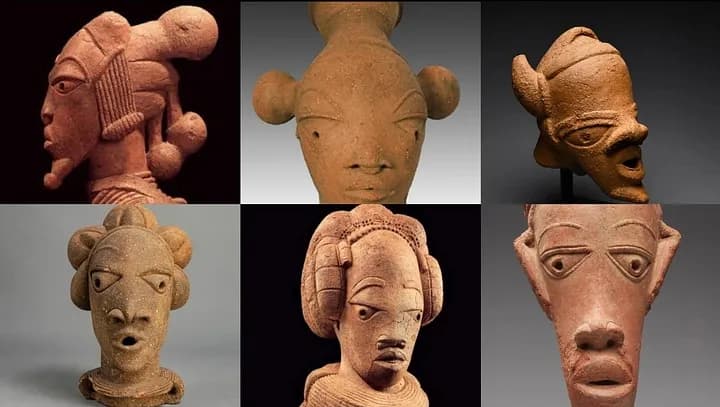
In Nigeria, the preservation of cultural heritage through art can be vividly seen in the case of the Nok culture. The Nok people, who lived around 1000 BC to 300 AD, are renowned for their terracotta sculptures. These intricate sculptures provide a window into the past, depicting the social and religious life of the Nok people. The terracotta art of Nok is not only significant for its aesthetic value but also for its role in understanding the early history of West Africa. Efforts to preserve these artifacts and educate the public about their historical context are crucial for maintaining Nigeria’s rich cultural heritage.
Art has always been a powerful medium for preserving cultural heritage, acting as a living testament to the history, traditions, and stories of various communities. Through art, we can capture the essence of our ancestors' way of life, beliefs, and values, ensuring that these cultural treasures are passed down to future generations. Let’s consider how art serves as a form of historique and its significance in preserving our rich cultural heritage.
Artists are the custodians of cultural heritage, using their creativity and skills to keep our history alive. Through their work, they capture the essence of their culture and share it with the world. As we navigate the complexities of modern life, it is essential to support and encourage artists to continue creating and telling their stories.
At Creath, we recognize the vital role artists play in preserving cultural heritage. We invite artists to mark their imprint by showcasing their work on our digital art marketplace. By doing so, they contribute to a global narrative that celebrates and preserves our diverse cultural heritage.
Artists, keep creating and telling your stories. Your art is not just a reflection of your creativity but a bridge connecting the past, present, and future. Share your work on the Creath art marketplace and be a part of this important cultural preservation journey.
Visit art.creath.io to learn more and join our vibrant community of artists.
Let's preserve our heritage, one artwork at a time.
September 3, 2024
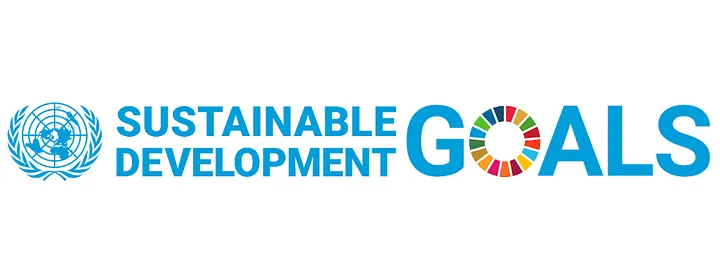
According to the United Nations, cultural and creative industries can contribute up to 10% of global GDP. This significant economic contribution underscores the importance of supporting and integrating art into sustainable development strategies.
Art has always been a powerful medium for expression, communication, and transformation. Beyond its aesthetic appeal, art has the potential to drive significant social impact, aligning closely with the United Nations' Sustainable Development Goals (SDGs). These goals, established in 2015, aim to address global challenges such as poverty, inequality, climate change, environmental degradation, peace, and justice. Integrating art into the pursuit of these goals can create a more inclusive, sustainable, and impactful approach to development.
Raising Awareness: Art has the unique ability to raise awareness about critical issues. Whether through visual arts, music, or literature, artists can highlight social and environmental problems, sparking conversations and inspiring action.
Promoting Cultural Diversity: The United Nations recognizes cultural diversity as essential for sustainable development. Art celebrates and preserves cultural heritage, promoting intercultural dialogue and understanding.
Encouraging Sustainable Practices: Artists often lead the way in promoting sustainable practices. From using eco-friendly materials to creating art from recycled objects, the art world is increasingly embracing sustainability. This not only reduces environmental impact but also sets a precedent for other industries.
At the forefront of this integration is Creath, a pioneering platform revolutionizing the art sector. Creath leverages blockchain technology to create a transparent, secure, and inclusive digital art marketplace. This innovation aligns with SDG 9 (Industry, Innovation, and Infrastructure) by promoting resilient and sustainable infrastructure and fostering innovation.
Creath not only supports artists by providing a platform to showcase and sell their work but also emphasizes social impact. Through collaborations with artists and communities, Creath aims to address various SDGs, from reducing inequalities in opportunities available to artists (SDG 10) to promoting responsible consumption and production using recyclable materials (SDG 12).
Art is a powerful tool for driving social change and advancing sustainable development. With an innovative platform like Creath leading the way, the integration of art and sustainable development holds the promise of a brighter, more inclusive future.
Join us in this journey towards a sustainable and impactful world, you can visit our website at art.creath.io.
September 3, 2024
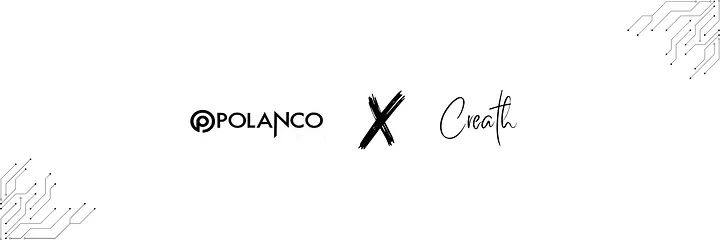
We are thrilled to share the success of the "Unbound" Exhibition, a collaborative effort between Polanco and Creath. It was the first of its kind, an exhibition that redefined the boundaries of artistic and automotive experience.
The private viewing held on the 9th of June, 2024, at the prestigious Polanco Exotic Cars location in Lekki, the event showcased a remarkable fusion of excellent artworks and exotic cars, creating an unforgettable immersive experience for all attendees.
At Creath, innovation is at the heart of everything we do, and the Unbound Exhibition was no exception. This event was carefully curated by the talented Amaka Obimgbo, whose keen eye for art brought together a collection of art pieces that captivated the imagination and emotions of our guests. The exhibition not only celebrated and showcased the artistic prowess of contemporary artists but also highlighted the elegance and luxury of Polanco’s exquisite car collection.
The contrast of these two worlds provided a rich, multi-layered experience that left a lasting impression on all who attended.
If you wish to revisit the exceptional artworks displayed, we invite you to explore the collection online at art.creath.io. Our digital platform offers an opportunity to experience the same innovation and artistry from the comfort of your home.
We extend our heartfelt gratitude to everyone who made the Unbound Exhibition a resounding success, from the artists and curator to the guests and partners.
As we continue to push the bounds of creativity and innovation, we look forward to more groundbreaking events that blend different facets of excellence.
Stay tuned for future events and exhibitions we have coming up by following us on social media and visiting our website.
September 3, 2024
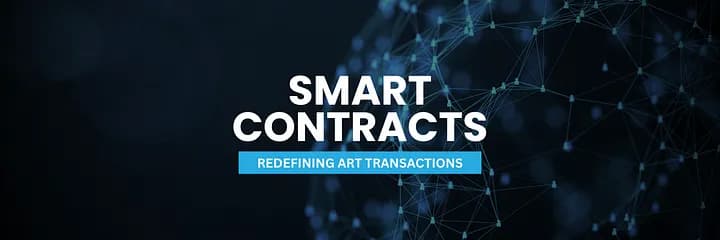
In the realm where art and technology intersect, Creath is leading the change in redefining art transactions through the innovative integration of smart contracts.
At the heart of this transformative journey lies the Creath Marketplace, a cutting-edge platform where creativity thrives and transactions are streamlined. Every artwork exhibited on our platform is underpinned by a smart contract, ensuring transparency, security, and authenticity in every transaction.
Smart contracts powered by blockchain technology, revolutionize the way art is bought and sold, eliminating intermediaries and reducing the risk of fraud. With each transaction seamlessly executed and recorded on the blockchain, buyers and sellers can engage with confidence, knowing that their interests are protected.
The Creath Marketplace offers a curated selection of captivating artworks, spanning various mediums and styles, each backed by a smart contract. Whether you’re an art enthusiast, collector, or investor, our platform provides a gateway to discover and acquire exceptional pieces from emerging and established artists.
Join us on this transformative journey as we harness the power of smart contracts to redefine the art market. Visit our digital gallery to explore our collection of exquisite artworks and experience the future of art transactions firsthand.
Welcome to a new era of creativity, transparency, and innovation with Creath.
September 3, 2024
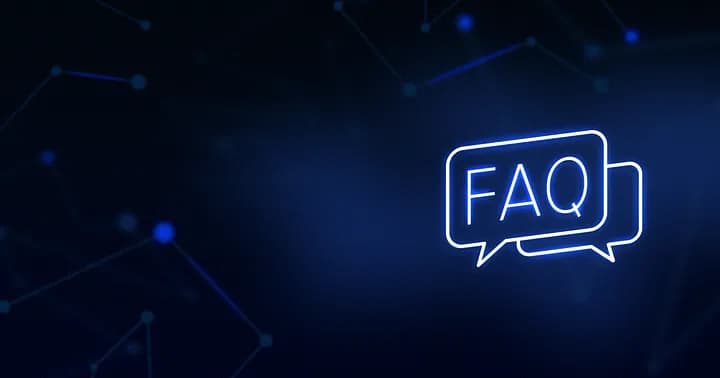
Creath is a next-generation tech company that delivers Web3, FinTech, PropTech, and Blockchain services. Our company comprises skilled individuals in Blockchain Development, Web Development, Marketing, Visual & Digital Art, Financial Trading, Art Curation, Community Management, Brand Design, and Project Management.
Our platform has an integrated marketplace built on the Ethereum Blockchain. This marketplace will serve as a gallery for artists to display their digitized artworks to a diverse audience.
The Creath marketplace is designed to be a digital gallery for artists, curators, collectors, and art lovers. The platform is easy to navigate and provides the best user experience. The marketplace attracts a global target audience that will participate in primary sales of our curated collections.
As an artist in partnership with us, your works will be seamlessly available to potential collectors worldwide.
A curated art collection is a collection that is carefully selected by a team of professionals for a particular target audience — usually because of its cultural value or aesthetics. Creath has a team of curators responsible for determining the collections to be displayed on the marketplace.
The curated collections will include generative art, hand-drawn digital art, and digitized physical artworks.
We digitise contemporary artworks into high-resolution Non Fungible Tokens (NFT) on the Blockchain. We also convert digital art to framed physical copies. We provide our primary collectors the original physical art of the NFTs purchased on our platform signed by the artist.
The Golden Ticket is a mint pass to all our holders. It will serve as a placeholder in the whitelisting of future projects. There is a limited supply of 1,000 Golden Tickets.
Asides from digital art curation, art sales, and exhibitions, Creath offers other Web3 and Blockchain services. These include:
Two Brothers and One Lumbo is a QR Code group Exhibition supported by Creath. The exhibition, taking place from August 5 to August 7, is a way of bringing digital and physical artists together within the Web3 space.
Registration for the event is still ongoing, and anyone interested is welcome to register.
The Creath marketplace is built on the ERC-20 chain and is compatible with ERC-20 stable tokens like USDT. Our developers have performed some minting exercises, alongside unit testing, on the marketplace to test the compatibility and functionalities of the platform.
Anyone using a hardware wallet can still make transactions on Creath through WalletConnect and MetaMask.
The Creath platform charges 20% for any art collection listed on the platform. Once any token is bought, 20% of the token’s price is sent to the Creath treasury address while the 80% balance instantly goes to the artist.
How Do Primary Sales Happen on Creath?
When artists submit their collections to us, we help them convert the art to NFT. The NFT generated through minting is held in the Creath treasury. Once the collection is ready for primary sales, it will be listed at a fixed price (determined by the artist) on the Creath marketplace. Interested external users can proceed to buy the listed NFT and gain ownership of the purchased token. Once ownership is transferred to the buyer, the NFT can be viewed on any secondary marketplace (like OpenSea) or NFT wallet.
Creath marketplace also supports secondary sales. Anyone who wishes to resell their collected tokens to other collectors can do so on our platform.
At our company, we take the security of our blockchain solutions very seriously. Here are some of the ways we ensure the security of our blockchain solutions:
Overall, we are committed to ensuring the highest level of security for our blockchain solutions, and we take a proactive approach to identifying and addressing any potential security risks.
While blockchain technology is most commonly associated with cryptocurrencies like Bitcoin, its potential applications extend far beyond the realm of digital currencies. Here are just a few examples of other uses for blockchain technology:
These are just a few examples of the many potential applications for blockchain technology beyond cryptocurrency. As the technology continues to evolve and mature, we expect to see even more innovative and exciting use cases emerge.
The process for developing a blockchain solution varies depending on the specific needs of the client and the complexity of the solution. However, there are some general steps that are typically involved in the process:
Overall, the process for developing a blockchain solution requires a deep understanding of the technology, as well as expertise in software development, security, and other related areas. At our company, we have a team of experienced blockchain developers who can guide clients through every step of the process to ensure that their blockchain solutions are effective, secure, and meet their specific needs.
Blockchain technology has the potential to benefit a wide range of industries, including finance, healthcare, supply chain management, and more. By providing a secure, transparent, and immutable way to store and share data, blockchain technology can help to streamline processes, reduce costs, and improve trust between parties.
In the finance industry, blockchain technology is being used to facilitate faster, more secure transactions, as well as to create new financial products and services. For example, blockchain-based platforms can be used for cross-border payments, peer-to-peer lending, and digital asset trading.
In healthcare, blockchain technology can be used to securely store and share patient data, while ensuring patient privacy and confidentiality. This can help to improve the quality of care, reduce errors, and facilitate medical research.
In supply chain management, blockchain technology can be used to track products from their origin to their destination, providing greater transparency and accountability. This can help to prevent fraud, improve efficiency, and ensure compliance with regulations.
Overall, the potential uses for blockchain technology are vast and varied. At our company, we work with clients across a range of industries to identify ways that blockchain technology can help to address their specific needs and challenges, and to develop customized solutions that deliver real value.
A cryptocurrency is a digital or virtual currency that uses cryptography for security and operates independently of a central bank. Cryptocurrencies are decentralized, meaning they are not controlled by any government or financial institution.
The most well-known cryptocurrency is Bitcoin, which was created in 2009. Since then, thousands of other cryptocurrencies have been created, each with its own unique features and use cases.
Cryptocurrencies can be purchased through cryptocurrency exchanges, which allow users to exchange fiat currency or other cryptocurrencies for the desired cryptocurrency. Some popular exchanges include Coinbase, Binance, and Kraken.
If you need more information about Creath, you can connect with our community on Discord. Our Discord channel has daily conversations that you can join for details about current and expected drops. You can reach out to our moderators for help. The channel also provides information on how to apply as an artist to Creath — announcements, user feedback, and more are available to you.
September 3, 2024
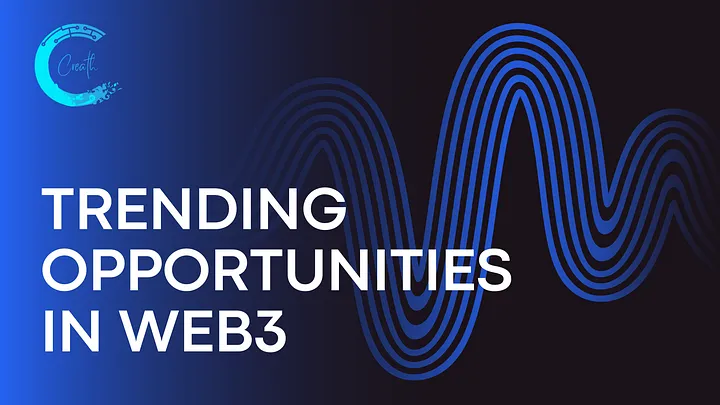
The technological field keeps advancing daily, and we are introduced to various opportunities from these advancements. One of these advancements is Web3. Web3 can be considered a technological ecosystem perfect for digital and physical business models.
Web3 effectively develops the relationship between different brands and their consumers. It is a breakthrough point in business and technology that can open the door to many opportunities. Web3 already has some impact on some companies.
Individuals with knowledge of Web3 are well sought after in society today. Anyone with sufficient knowledge of Web3 has opportunities in the tech and business sectors. There have been many trending jobs related to Web3 in recent times. Here are some of the trending jobs in Web3.
Blockchain architects are highly sought after because they are needed to design the architecture and security of different blockchain systems. Due to this, blockchain architects are usually rushed by companies and brands that require their services. They are also responsible for implementing these designs in projects.
Another job required from blockchain architects is the task of researching and testing new Blockchain technology. They also design core protocols and tokens while dealing with components integrating various blockchains.
Web3 developers are one of the most sought-after people in the Web3 field. The reason is simple. If you want to develop your blockchain, you require the help of a Web3 developer. Businesses that aim to build their complete blockchain or decentralized apps need Web3 developers working for them.
Many companies highly appreciate people with extra knowledge of programming languages like Python and Javascript. Developers are also in charge of creating and testing new software that will be useful in the web3 domain. Web3 development is an opportunity to attract many skillful people to the blockchain business.
Marketing is an essential aspect of business and is helpful in every field where an exchange is involved. Therefore, in the web3 area, web3 marketers have many opportunities. Web3 marketers are usually knowledgeable on the latest blockchain trends and can relate easily with customers.
Anyone selling a product or service wants someone who can communicate deeply with customers to create a relationship between them and the brand. Marketers also work on strategies to expand the reach of brands through websites and social media platforms like Twitter and Instagram.
The Web3 environment is about enhancing the customer's experience to the fullest through interactive marketing. Hence, marketing is a very hot opportunity in the web3 field. It is a chance for marketers to be introduced to a new area.
Web safety is an important topic, and many businesses and brands on the internet aim to secure their sensitive data from corrupt hands. This leads to an expert needing to curb any efforts to infiltrate or cause damage to their brand. These experts are called cybersecurity analysts.
Web3 comprises a large ecosystem and requires cybersecurity analysts to help to handle any hidden threats and counter vulnerabilities in their system. Without the presence of a cybersecurity analyst, the blockchain of the company or brand will be open to attack from hackers.
The primary role of a cybersecurity analyst in web3 is to detect and prevent any potential threat and to develop different measures to deal with any future threats. Cybersecurity analysts are sought after by many companies.
Another one of the trending opportunities in web3 is community management. The work of a community manager is to manage large social media channels like Discord. An extensive community-like system like Discord requires a community manager to ensure the proper and smooth running of the channel.
Community managers help moderate comments and provide customer service to the platform users. They are in charge of managing web3 communities and the various members of the community. Also, they help promote new products and watch out for competitive brands.
Content writing is a job that can be found in almost any field. In the web3 field, content writers must write exciting content about the blockchain and other web3 topics to create awareness and promote their brand’s services. This content will be posted on different platforms to educate and promote their service to the masses.
Web3 is one of the most recent technological advancements that open doors to diverse opportunities. There are many opportunities for people with different skillset to make a living through web3. Some trending opportunities in web3 include; web development, cyber security, and blockchain architecture.
September 3, 2024
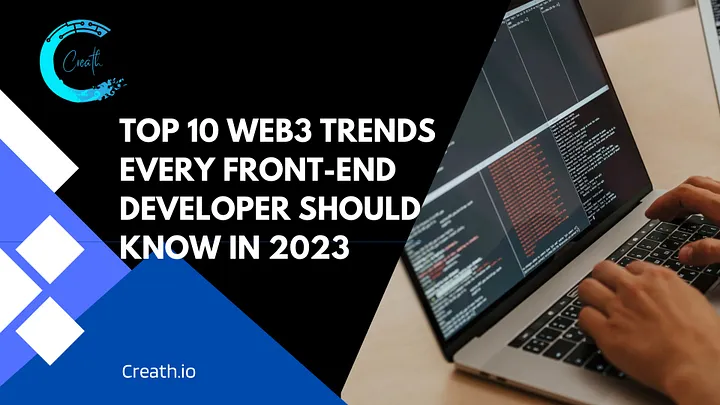
The world experiences technological advancements every day. Digital currency is not strange in the world today, and many people are familiar with terms like Web3, cryptocurrency, NFTs, and the blockchain. As the world advances in blockchain technology, many people are looking more into Web3.
With the introduction of the metaverse, Web3 has become one of the most discussed subjects on the internet, especially among front-end developers. Front-end developers need to know the various trends and developments in Web3 to keep up with the times. This helps them to be better prepared.
Various new opportunities are discovered on the internet daily. Knowing these trends will give you an additional advantage over other front-end developers. Some of these opportunities can be utilised directly or inspire you to start your program. Are you curious about Web3 trends in 2023? Here are ten Web3 trends every front-end developer should know.
Blockchain is one of the most commonly used terms in Web3. It can be defined as a decentralised ledger that allows you to store data. The data stored on the blockchain is spread across a vast network of computers and divided into what are called blocks. These blocks are all interconnected to each other.
When you add more data to the blockchain, it will be placed in an empty block, which will then be connected to the other blocks. This forms a chain-like network of stored data. Any data you input into the blockchain is permanent and can be viewed by anyone. You cannot reverse the process.
NFT stands for Non-Fungible token. It is a popular term that has overtaken the world in recent years. Almost everyone worldwide has heard about NFTs or is involved in them. An NFT is a special token that is unique to a particular asset that has been stored on the blockchain.
The token represents various digital assets you might have on the blockchain, such as art, 3D models, and images. An NFT is a unique item that cannot be copied. It is exclusive to the asset you use it to represent.
Cryptocurrency is also a hot topic in the world today. It can be defined as a digital currency that uses a decentralised system. Hence, it is not controlled by any independent body, such as the government or banks. Many cryptocurrencies are available today, such as bitcoin, Doge, and Ethereum.
Anyone can use cryptocurrency. The decentralised system allows every individual to buy, sell, and trade crypto without worrying about any controlling body. It is also a very safe method of making transactions online. You can easily buy anything with cryptocurrency if you want to purchase anything.
A crypto wallet, just like any other wallet, is used to store cryptocurrency. There are various types of crypto wallets. Some crypto wallets come in software form, while some are small devices. Either way, you can use them to store multiple cryptocurrencies and make transactions.
You can quickly transfer crypto from one wallet to another. All you need is the wallet’s address, and you’re ready. The cryptocurrency in your wallet is perfectly safe, and you don’t have to bother about being stolen.
The metaverse is a revolutionary step in the advancement of the internet. It is a 3D virtual world that you can access from anywhere you are in the world. You can perform many life activities and more on the metaverse, such as hosting or attending an art auction or a music concert.
You can access the metaverse through virtual reality and augmented reality technology. These two methods provide tools to access the 3D virtual space, such as virtual reality helmets and augmented reality glasses. The metaverse can be said to be the most significant recent advancements in technology.
A metamask is very useful as it lets you easily connect with the blockchain. If you have a metamask, you can make any transactions on the blockchain. A metamask enables the owner access to their crypto-wallet through an app or web browser extension.
Metamasks are decentralised and can buy, sell, and store cryptocurrency from anywhere. It is a safe and effective way for individuals to access the blockchain and its services.
A decentralised application is a software application that users can run on a blockchain. Any software that can work inside a blockchain is a DApp. A DApp operates on its own through smart contracts and is open-source. It is open to the public and does not function on just one authority.
DApps are like regular applications in that they also provide specific functions for users on the blockchain. It also allows individuals to perform any transaction directly without going through an intermediary or centralised authority.
A decentralised autonomous organisation is a free platform that allows users to manage code together. This means more than one person can help to manage the code on the forum. You can only run a decentralised autonomous organisation on a blockchain network. It is an open-source medium.
A DAO is constructed by rules which are in the form of codes. It is always open so members of the organisation can manage the rules together. Since it is decentralised, a DAO cannot be influenced by the government or any central authority.
As the name implies, a smart contract is an agreement in the form of a blockchain program. Once the conditions of the contract have been met, the smart contract will be activated. It allows you to perform various actions on the blockchain, such as buying and selling crypto.
Once a specific action has been inputted, the smart contract will be enabled and deliver the resulting action. You can use a smart contract to perform many activities that require two or more parties. It is also speedy and reliable.
Scalability and transaction speed are significant when it comes to the blockchain. Solana is a new, fast-improving blockchain technology offering incredible transaction speed and scalability. Solana helps to process any transaction you have on the blockchain faster and more efficiently.
Web3 is a fascinating topic that is prevalent around the world today. As a front-end developer, there are many Web3 trends you need to be familiar with to help give you an advantage over others. Some Web3 trends every developer should know in 2023 include NFTs, cryptocurrency, and the metaverse.
September 3, 2024

Spatial.io is a virtual reality platform that allows users to interact with others in a shared virtual space. In order to participate in these virtual experiences, you will need to create an avatar that represents you in the virtual world.
Creating an account on Spatial.io is a simple process that requires a few easy steps and you’re good to go. So whether you choose to use the mobile app or simply register via the website, you should have issues setting up an account in no time.
After the registration process, you’ll have the chance to select a pseudonym or name for yourself and create your Spatial avatar.
Here are the steps to create an avatar on Spatial.io:
The great thing about Spatial.io is the opportunity to enjoy a variety of features that are quite useful and exciting to use. However, as a new user, you may need a little guide on how to find your way around the app.
So here are a few tips to help you navigate the platform and explore some of the exciting features available.
First, you can access the main navigation menu by simply holding on to the blue dot and pulling it down. This will provide menu options that will allow you to perform various actions.
The content menu is filled with a host of other features that you can use to create top 3D designs. You can also upload your own content and add files that you wish to modify or design. Some of the main tools you’ll find in this section include:
To access the settings for your profile or space, click on the three dots in the top right corner of the page. Here you’ll be able to tweak certain elements, adjust your audio, turn on or off your avatar and so much more.
With these steps and tips, you will be able to create an account on Spatial.io and quickly start exploring and utilizing all of the features the platform has to offer.
We will be hosting a Virtual Tech Conference on the 8th Of March 2023 — International Women’s day.
WOMEN IN WEB3 — Creating opportunities for women in the Web3 space.
Join us in the Spatial Metaverse on International Women’s Day to celebrate women’s achievements and advancements in technology with keynote speakers, panel discussions, and networking opportunities.
Sign up here! Don’t miss it!
See you there!
September 3, 2024